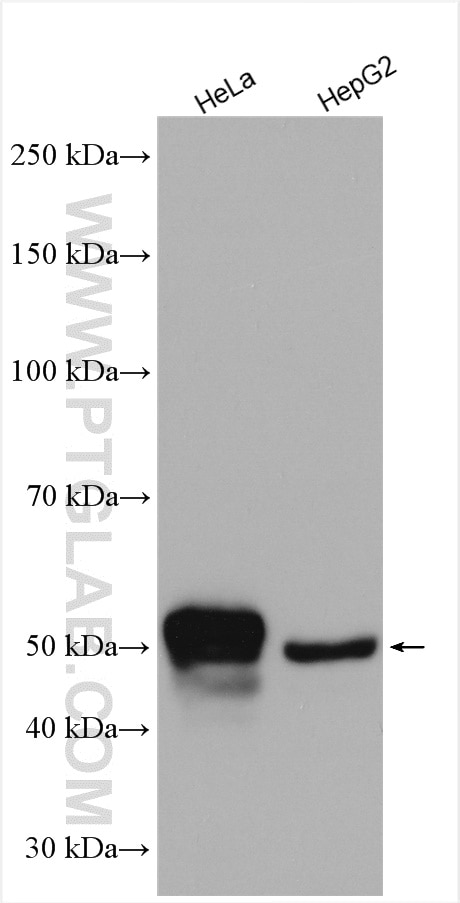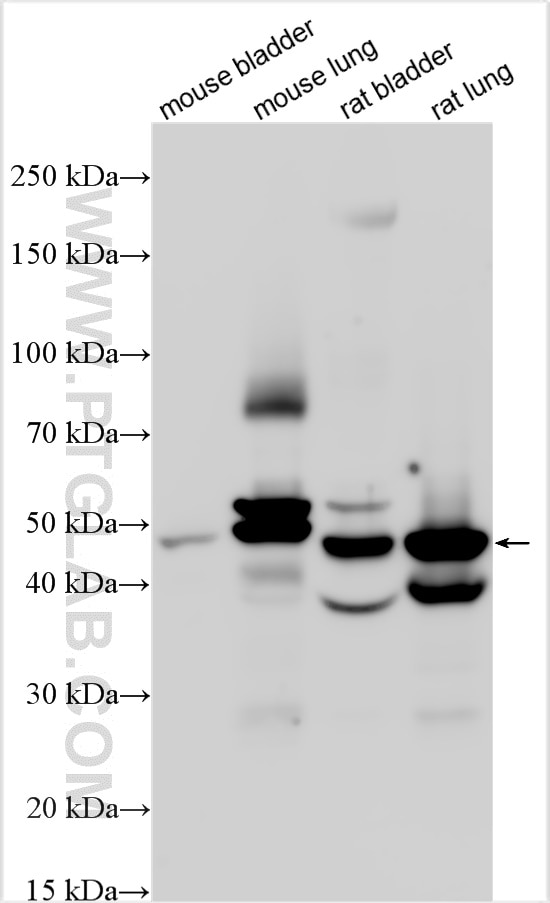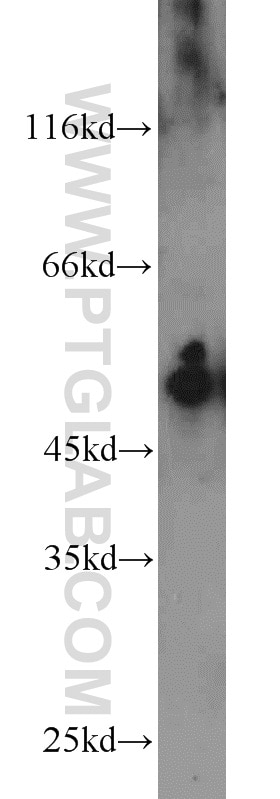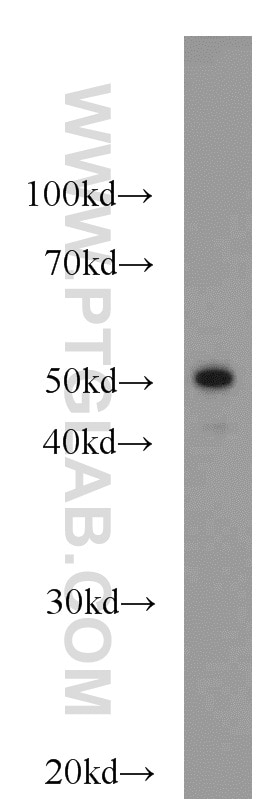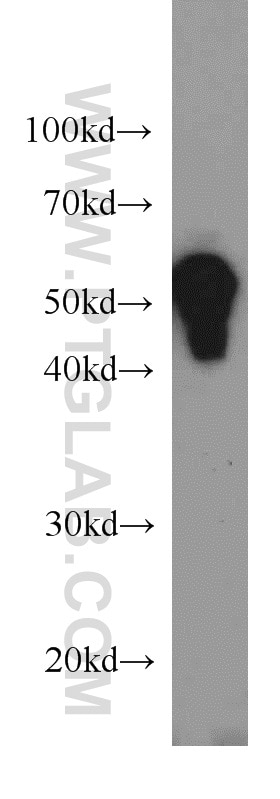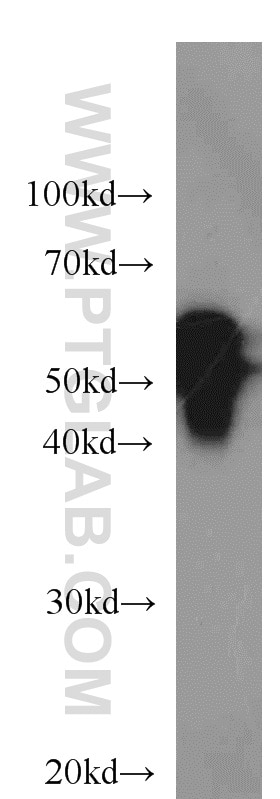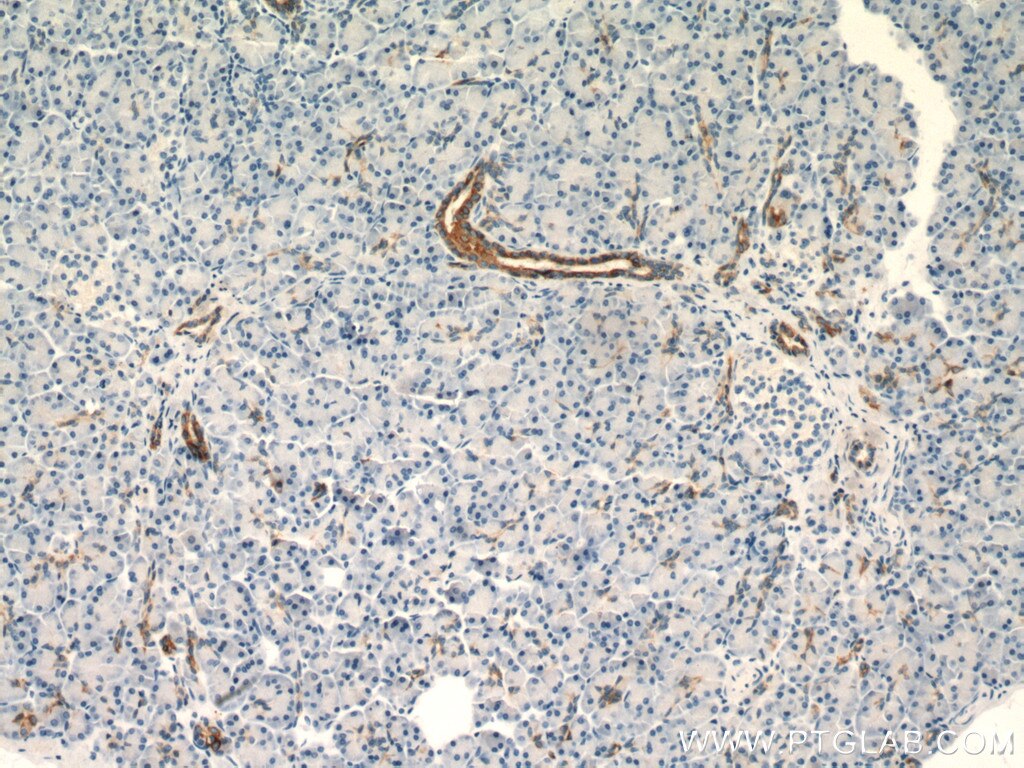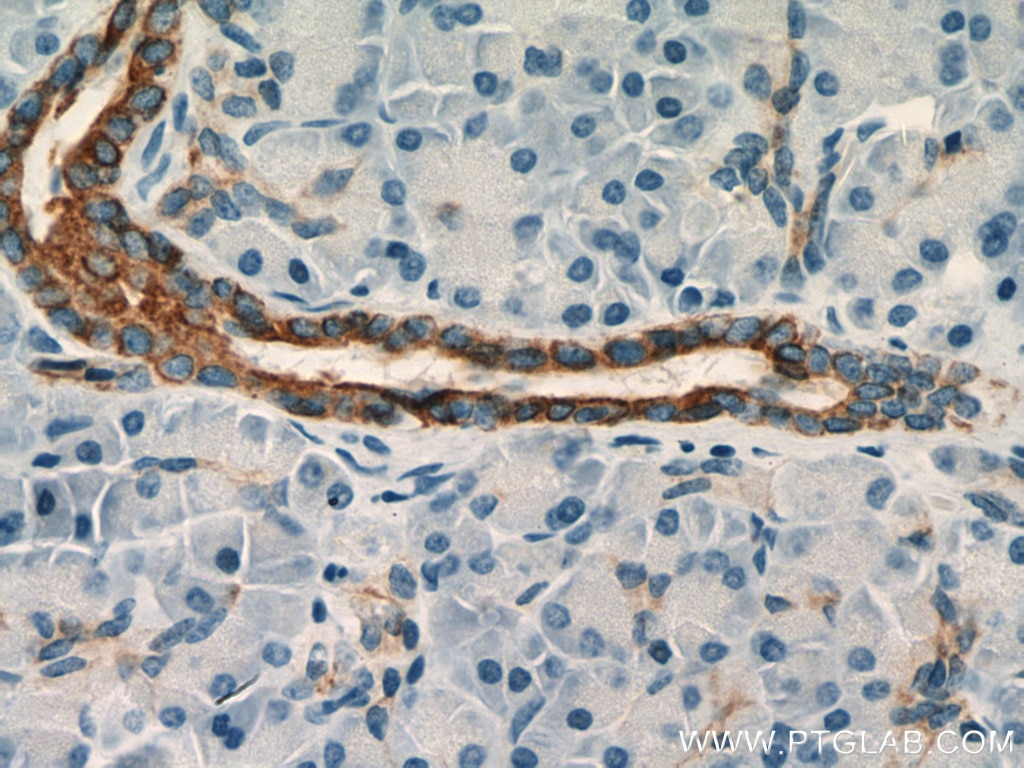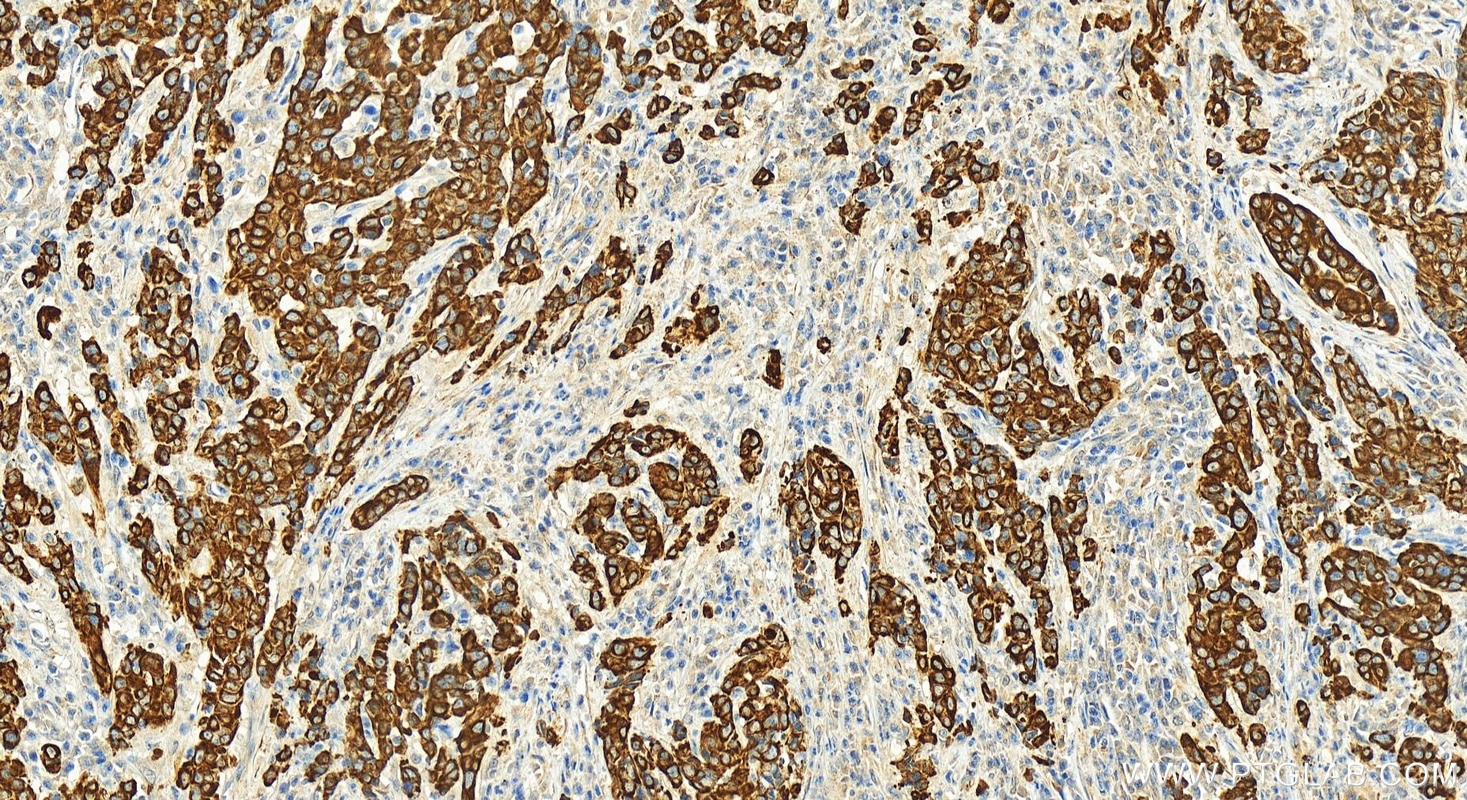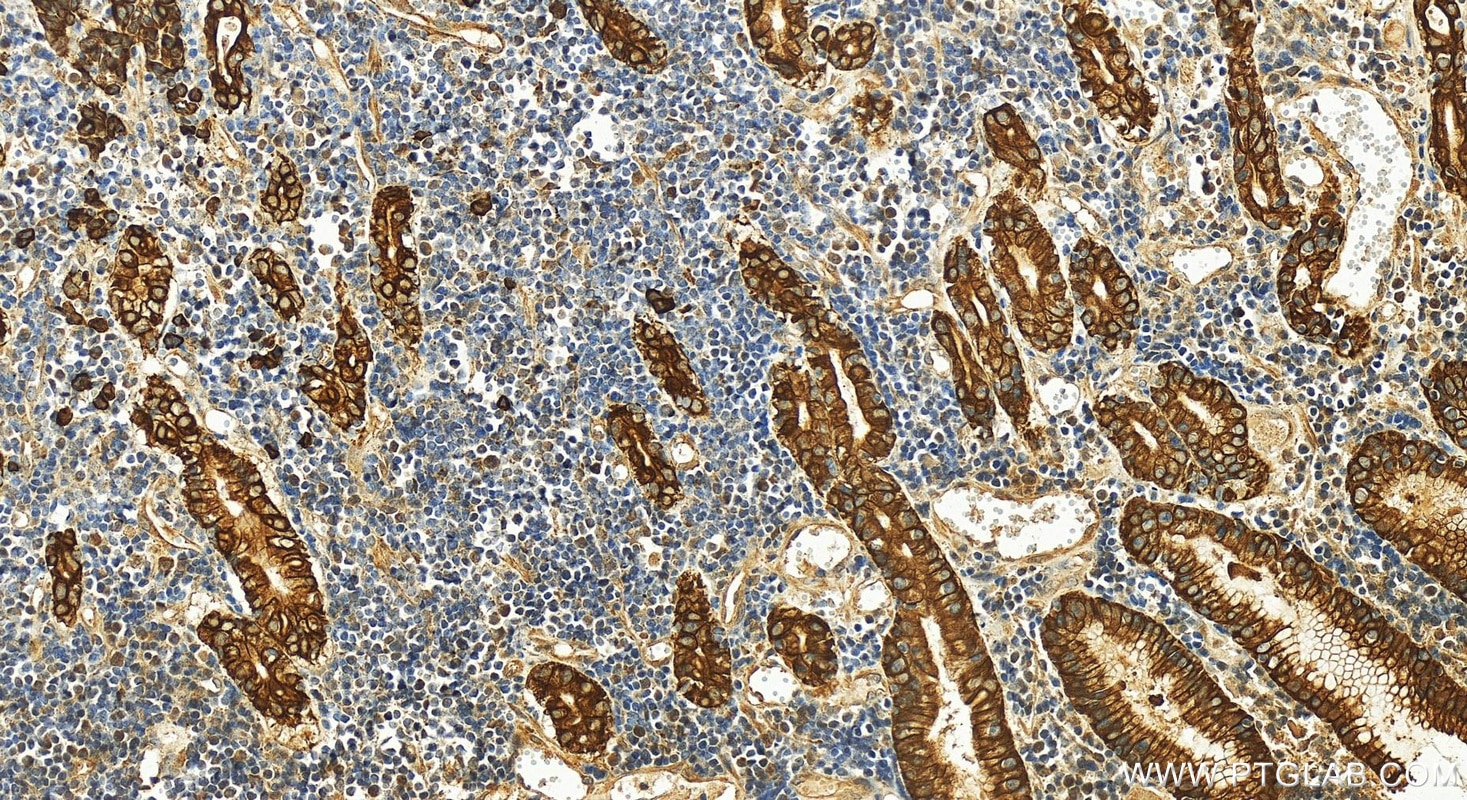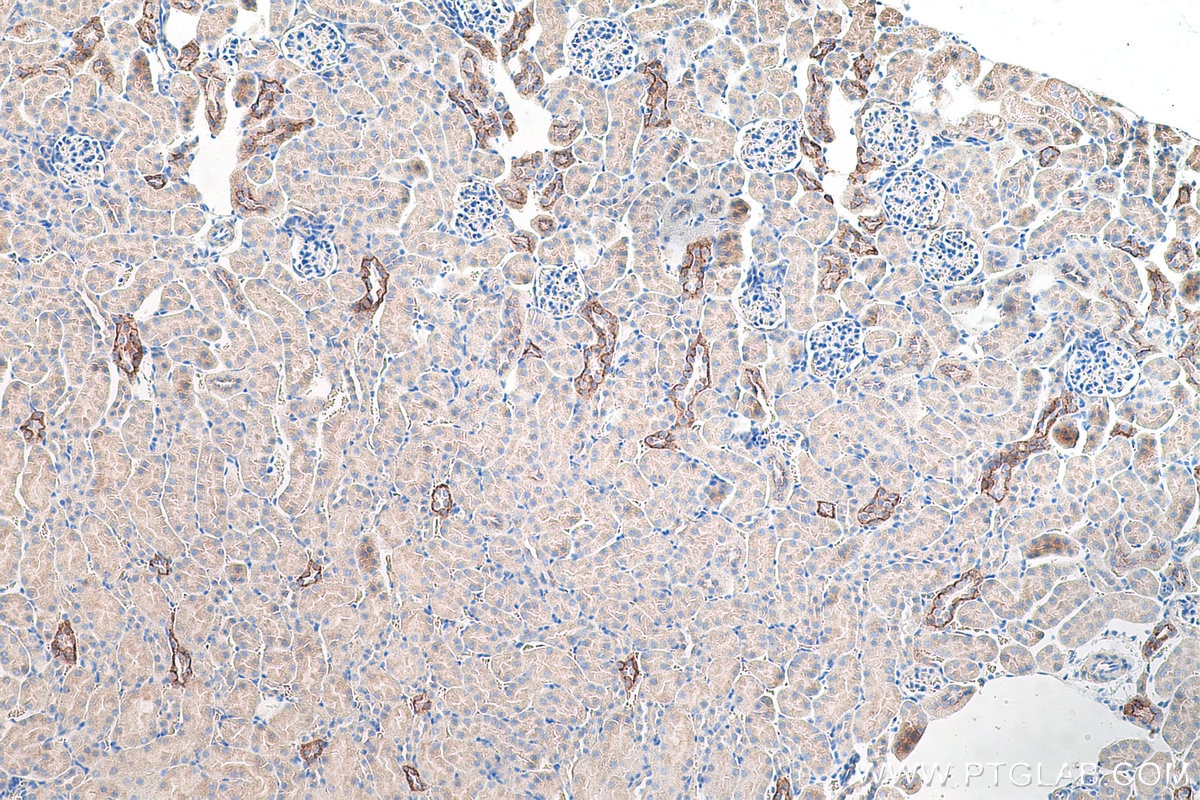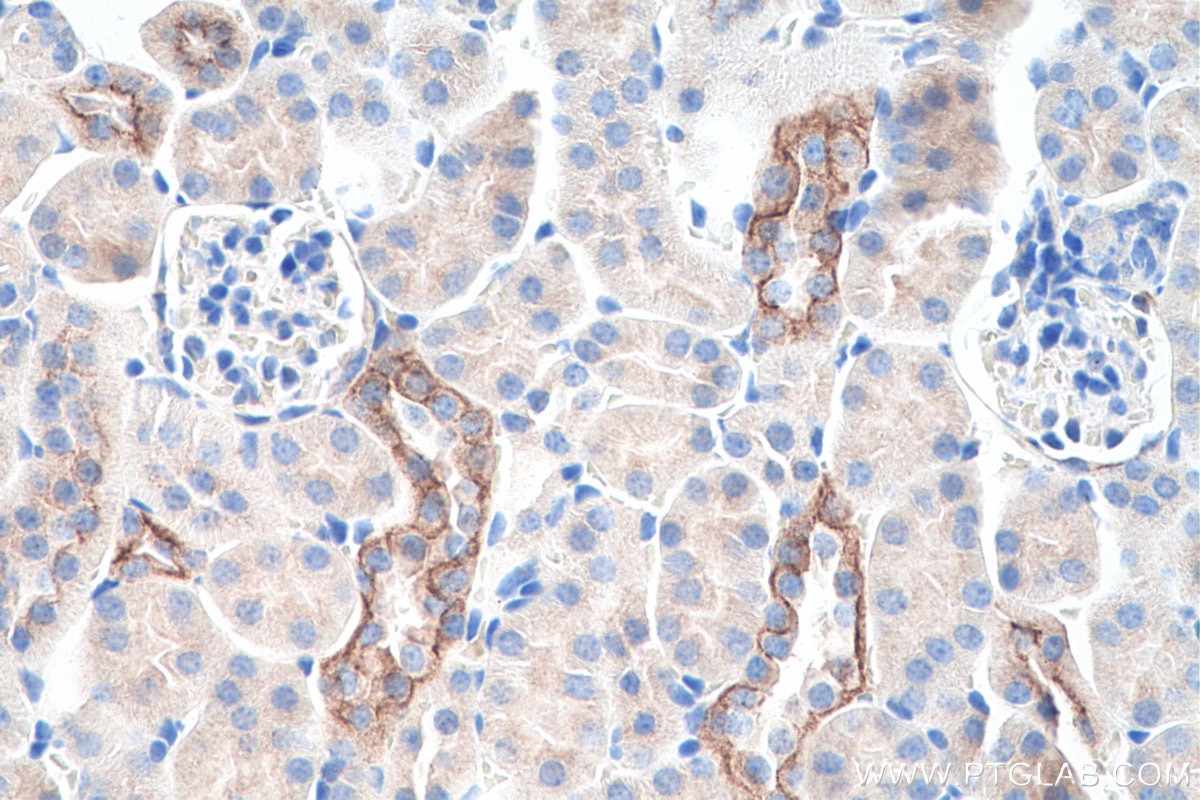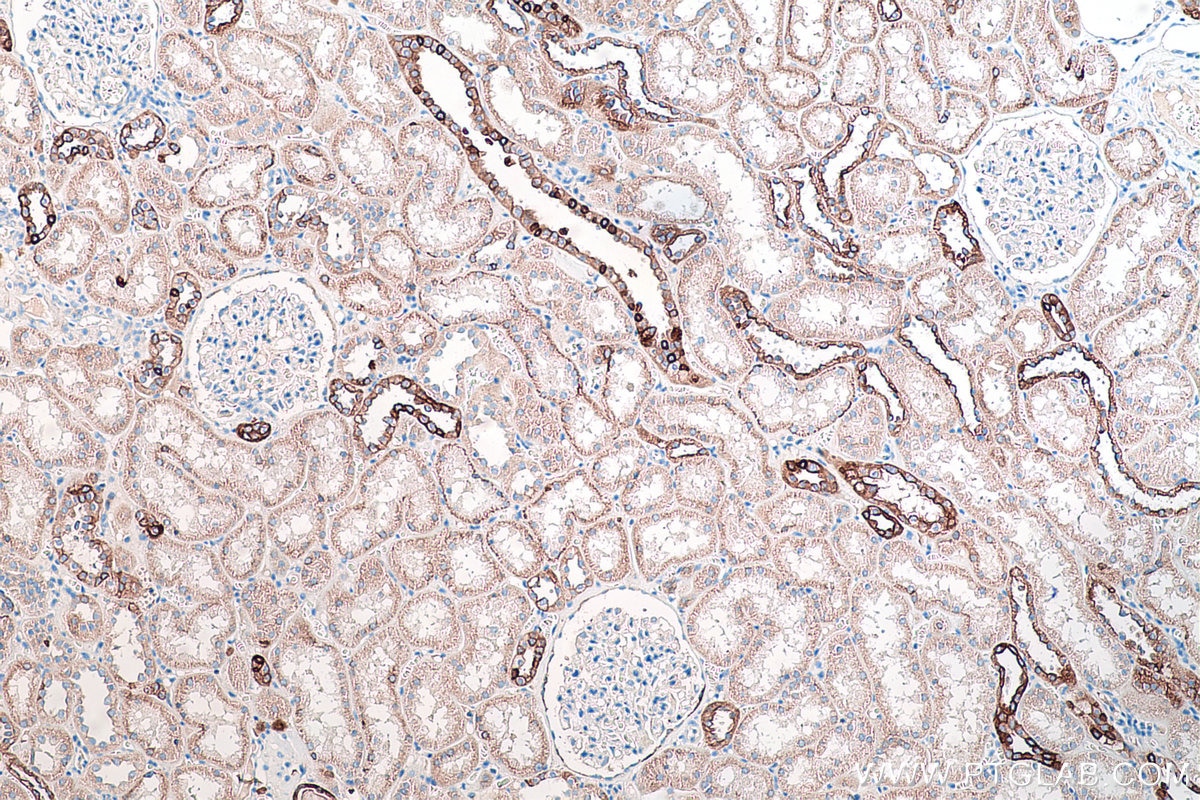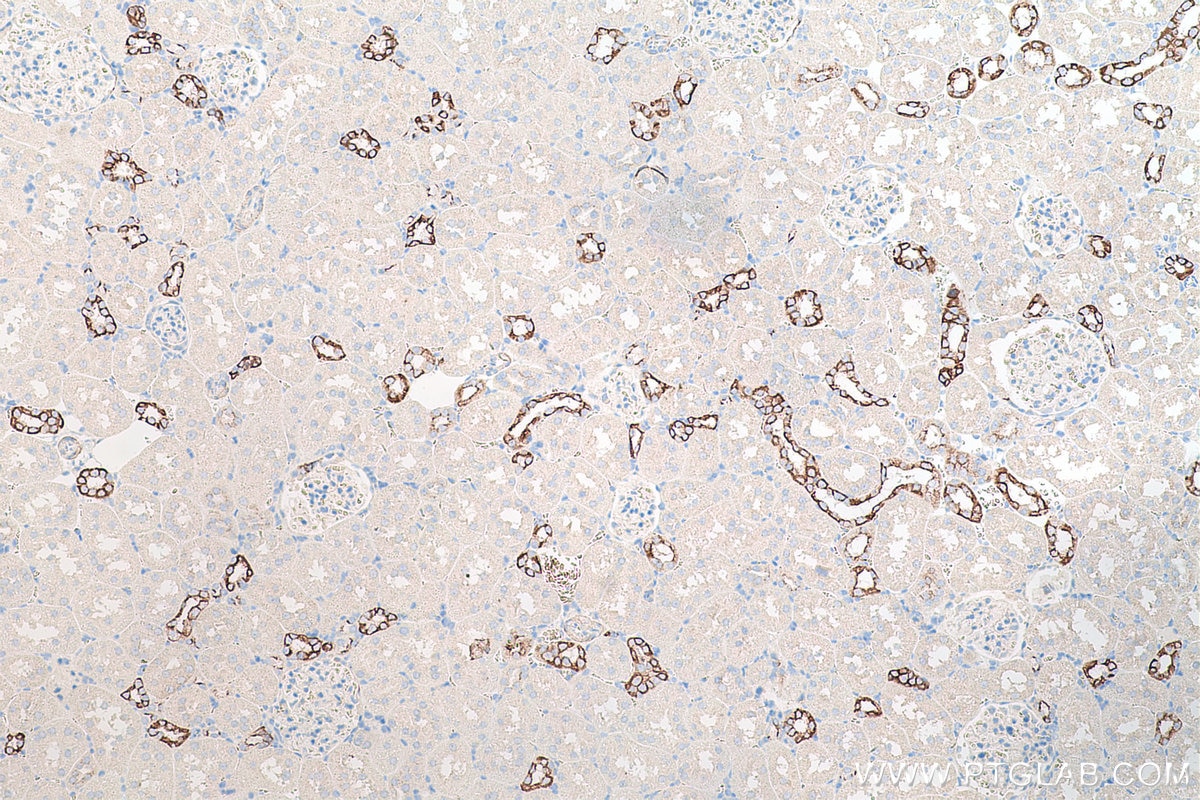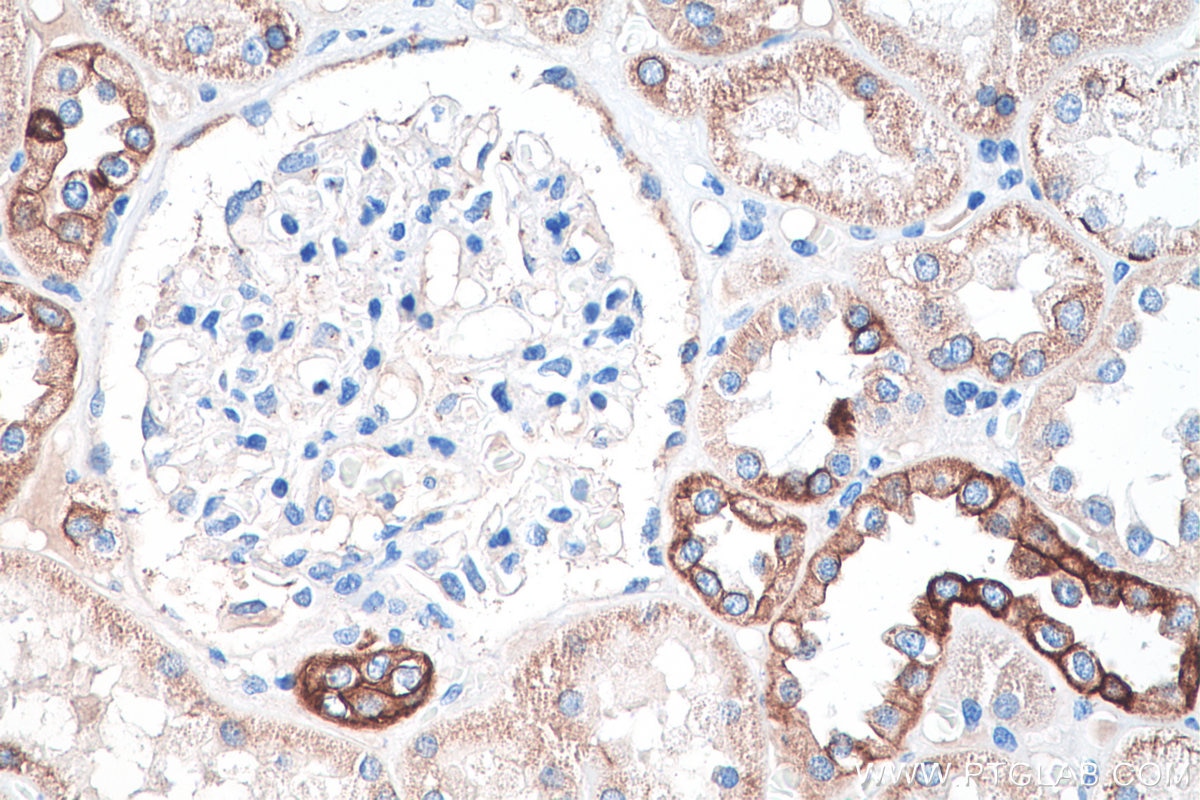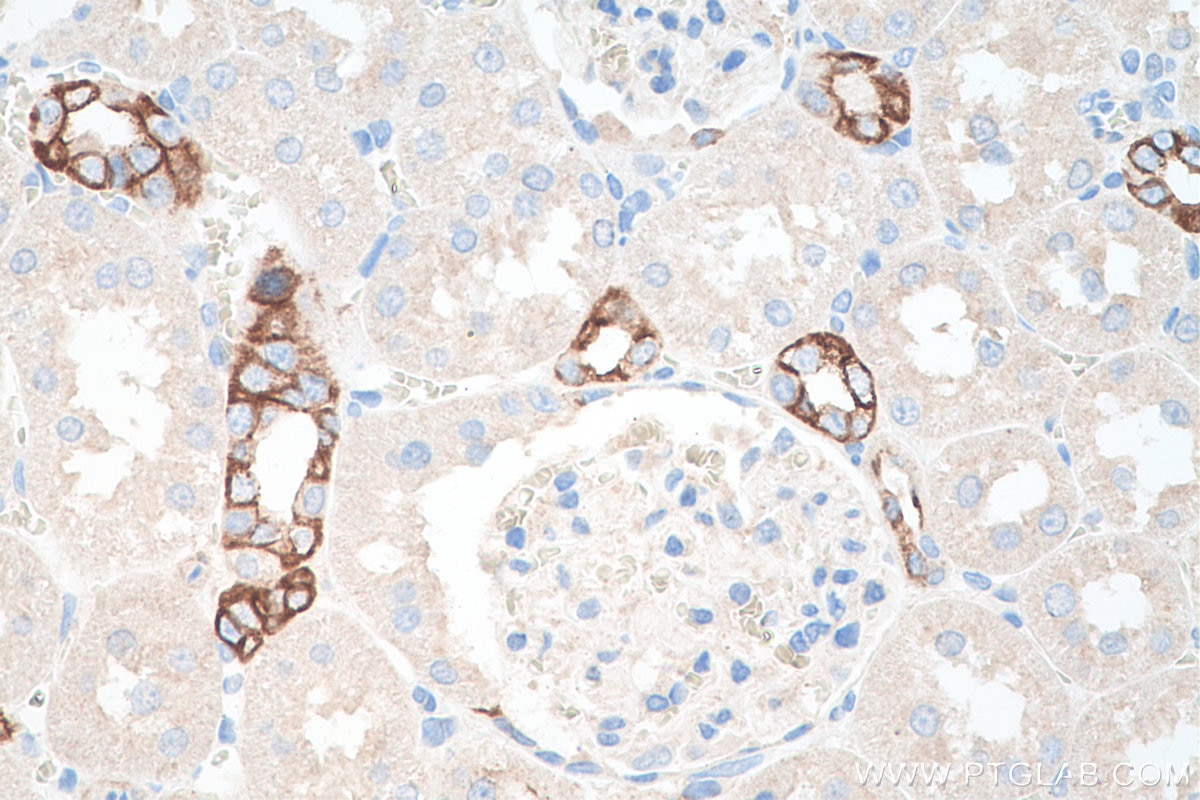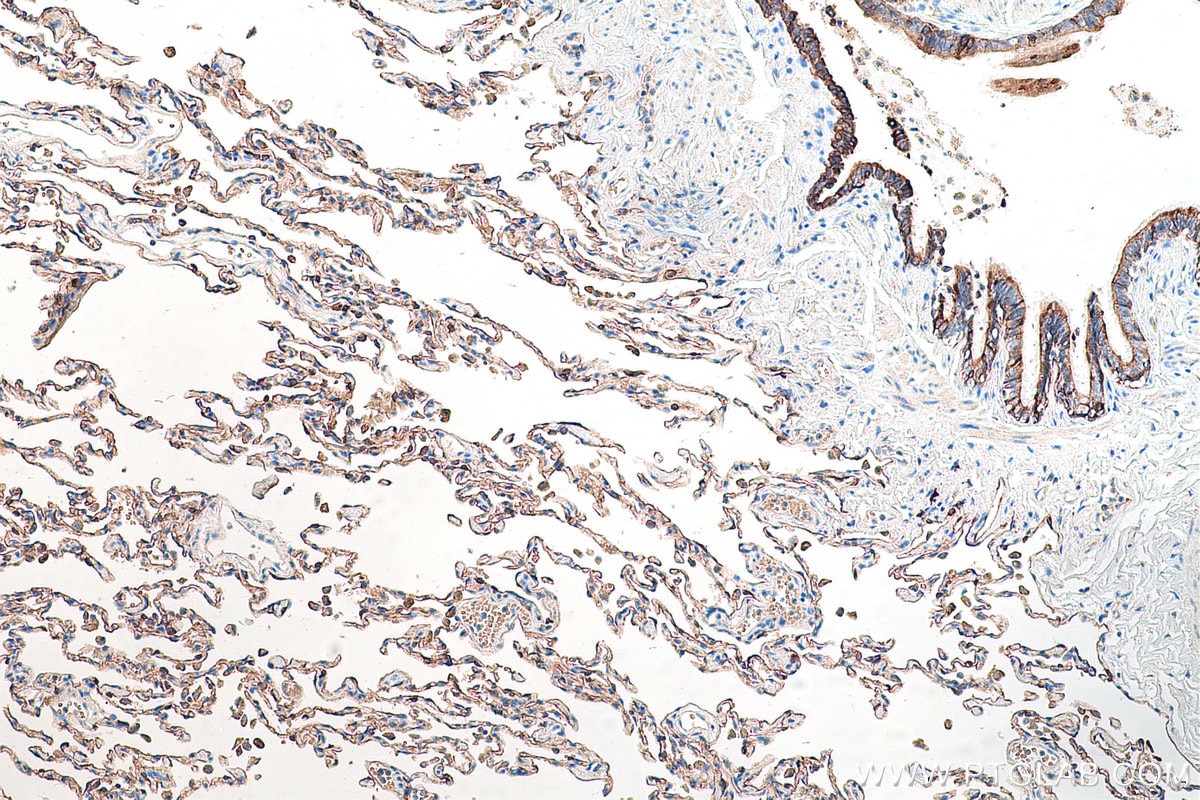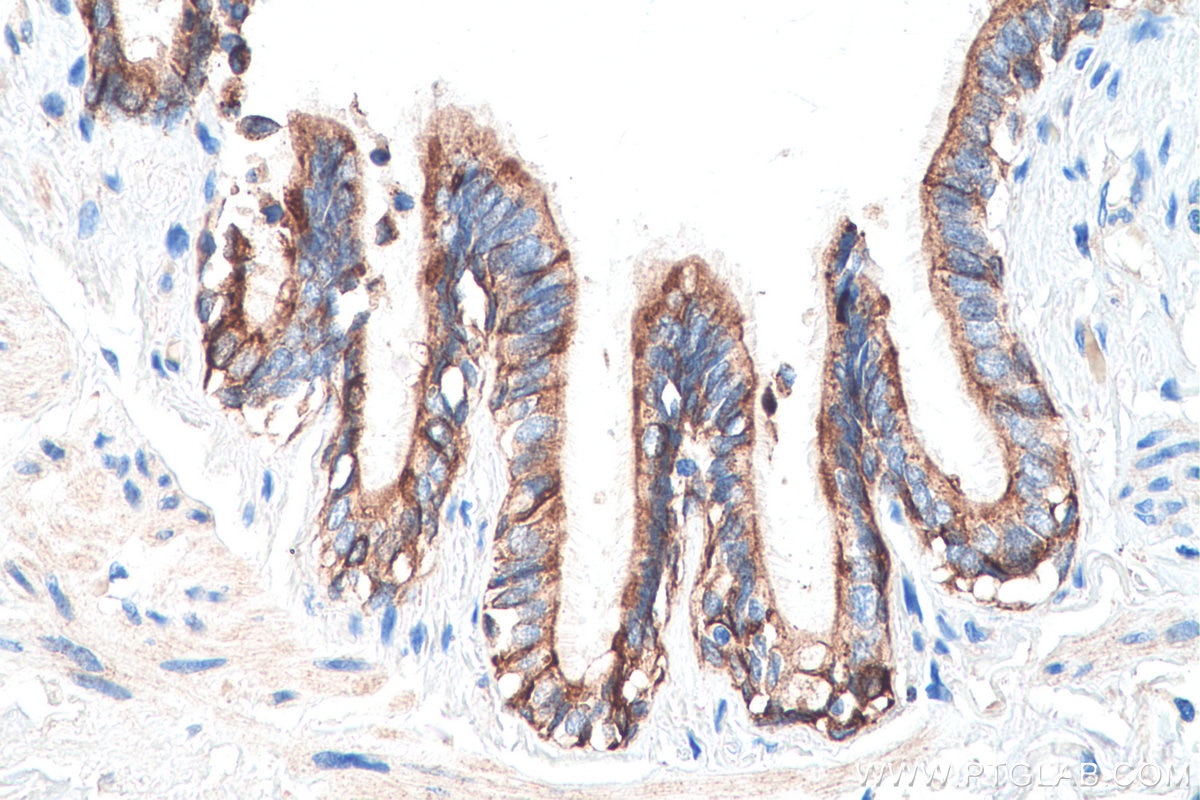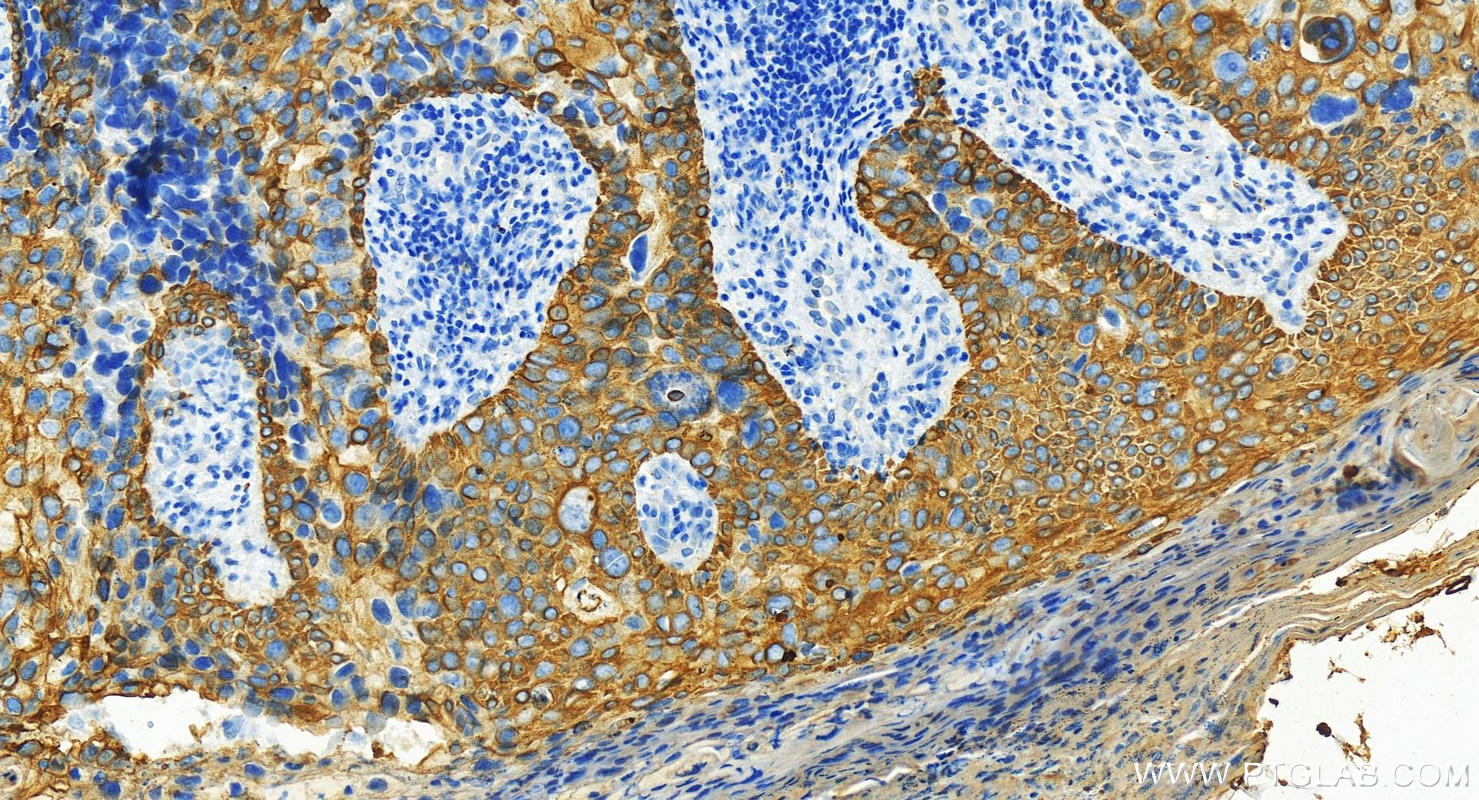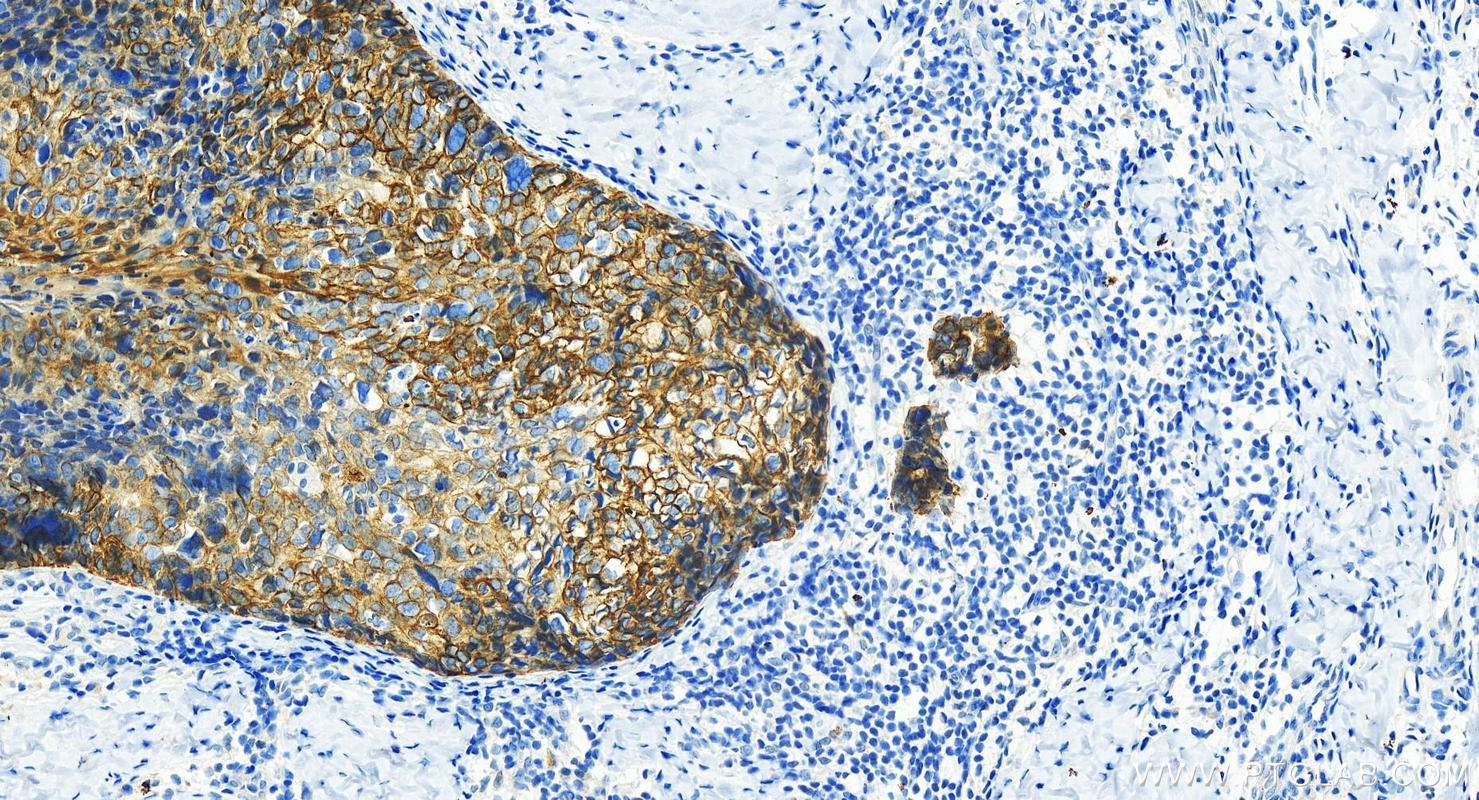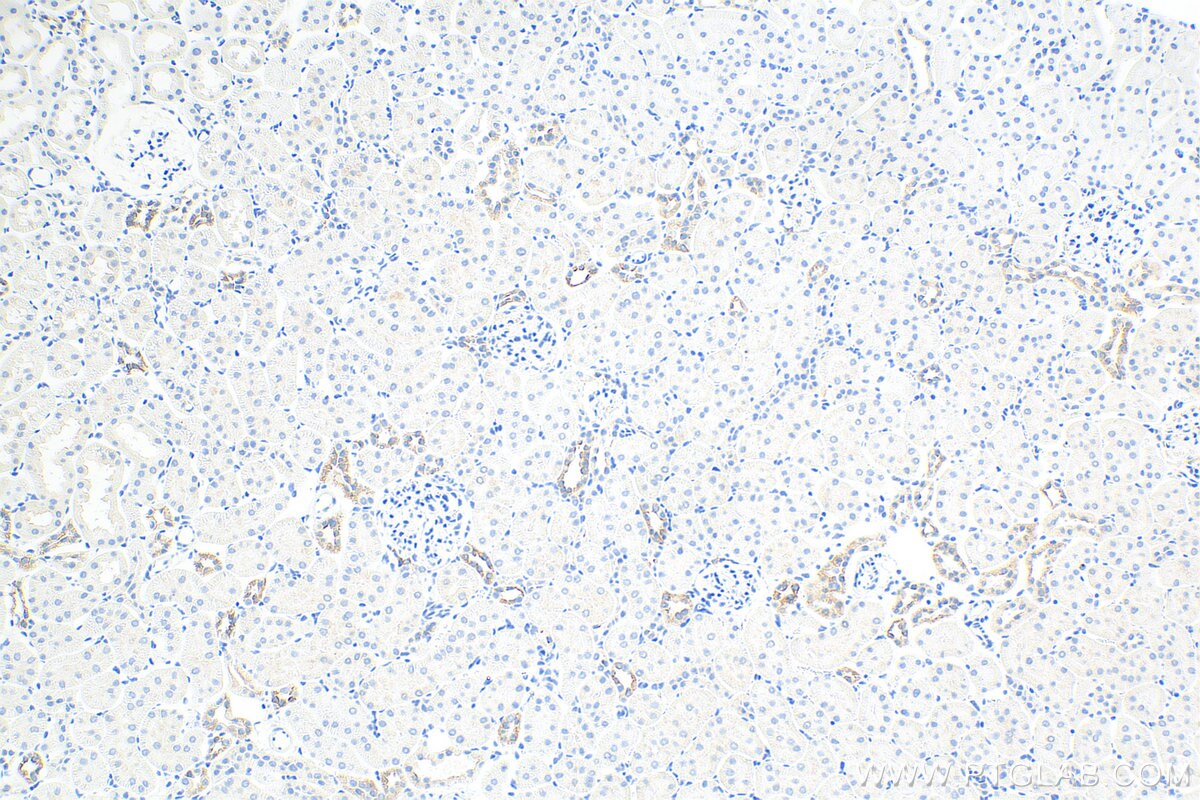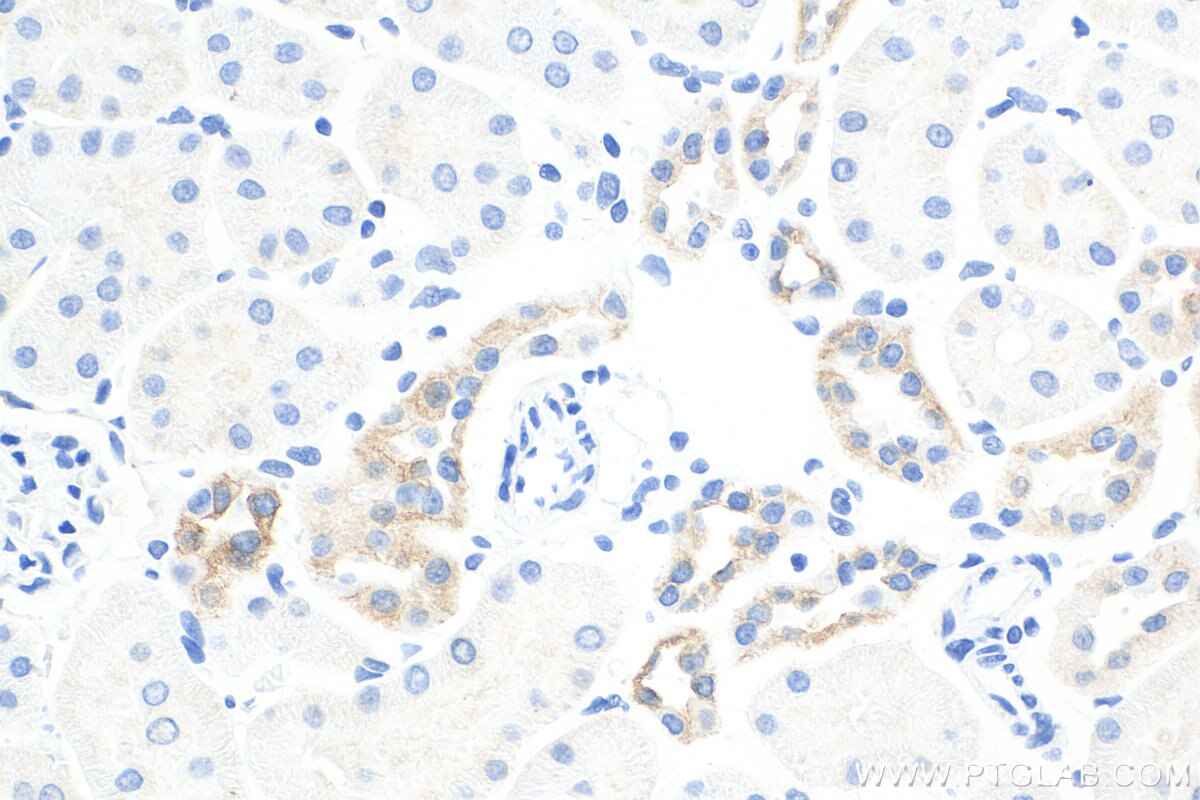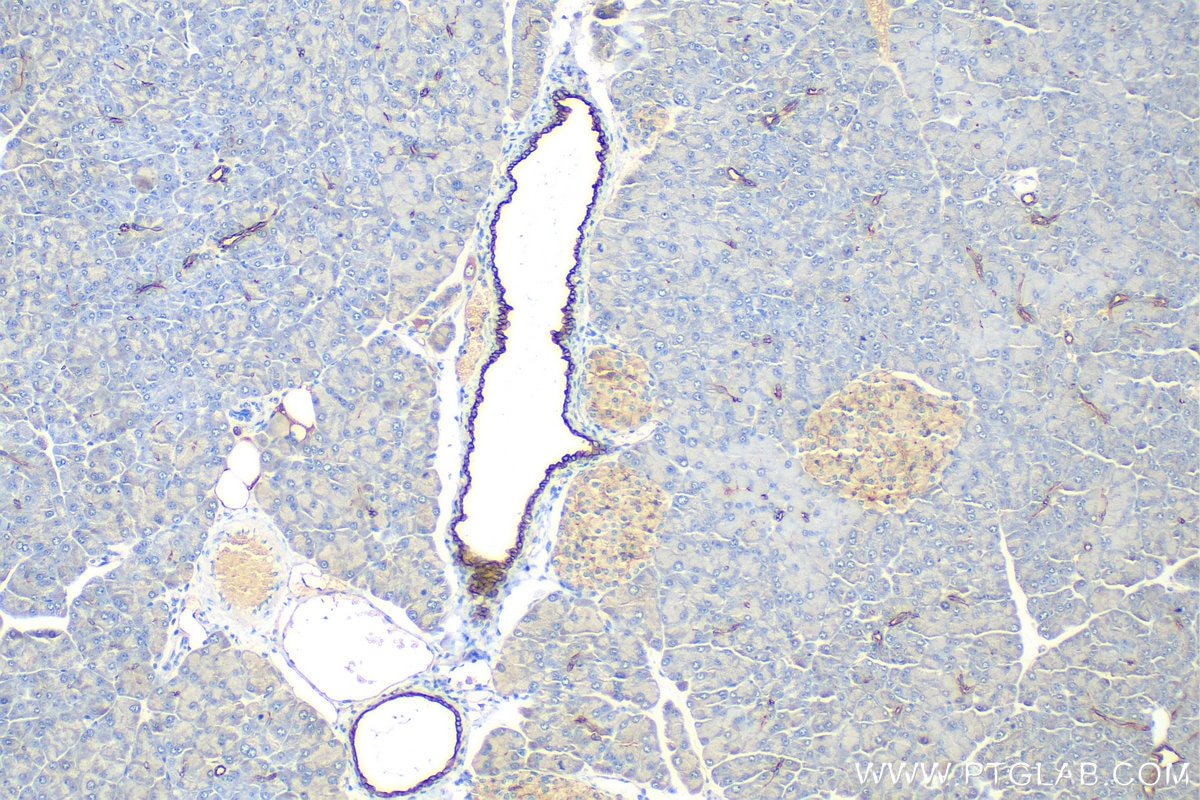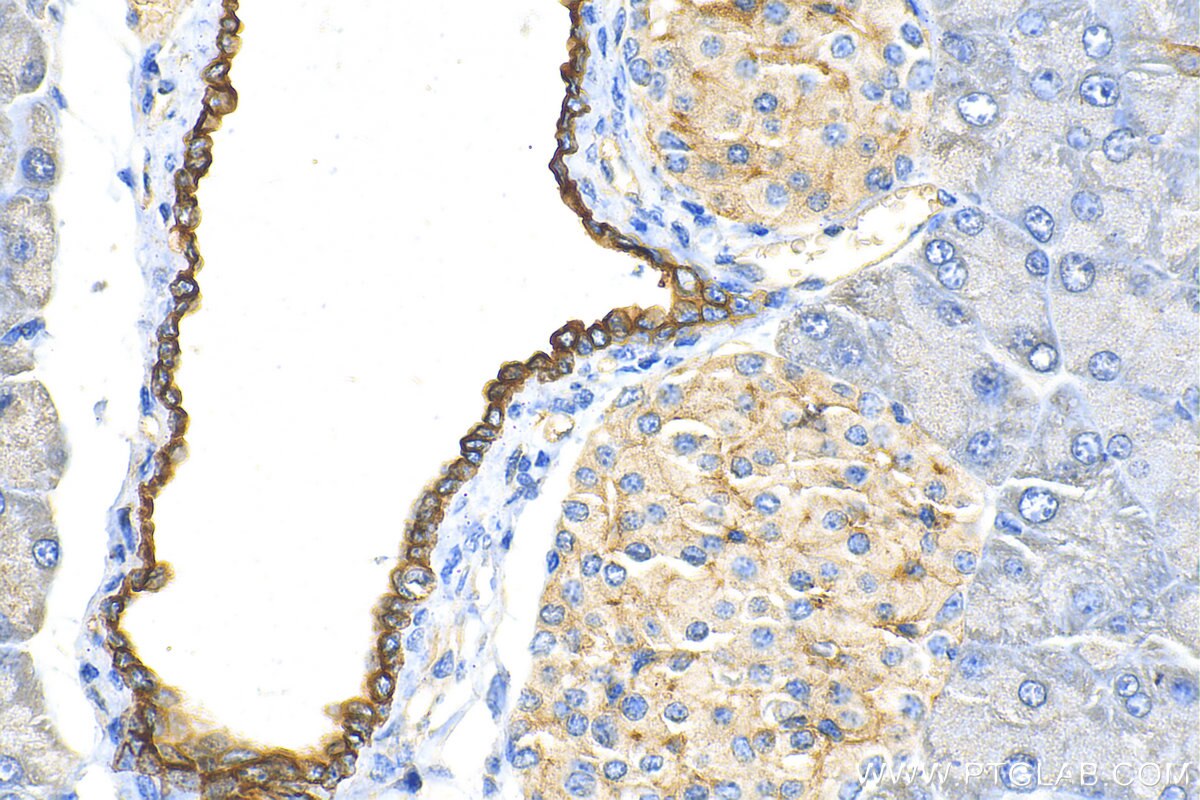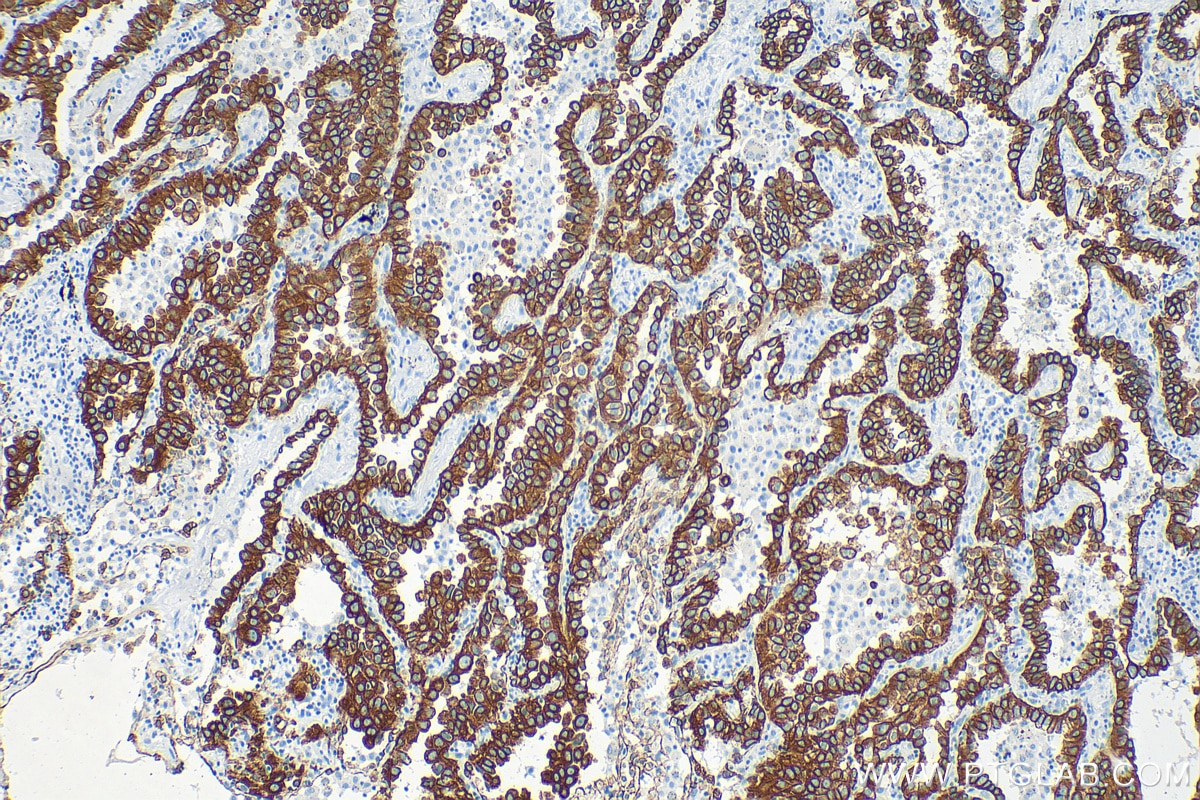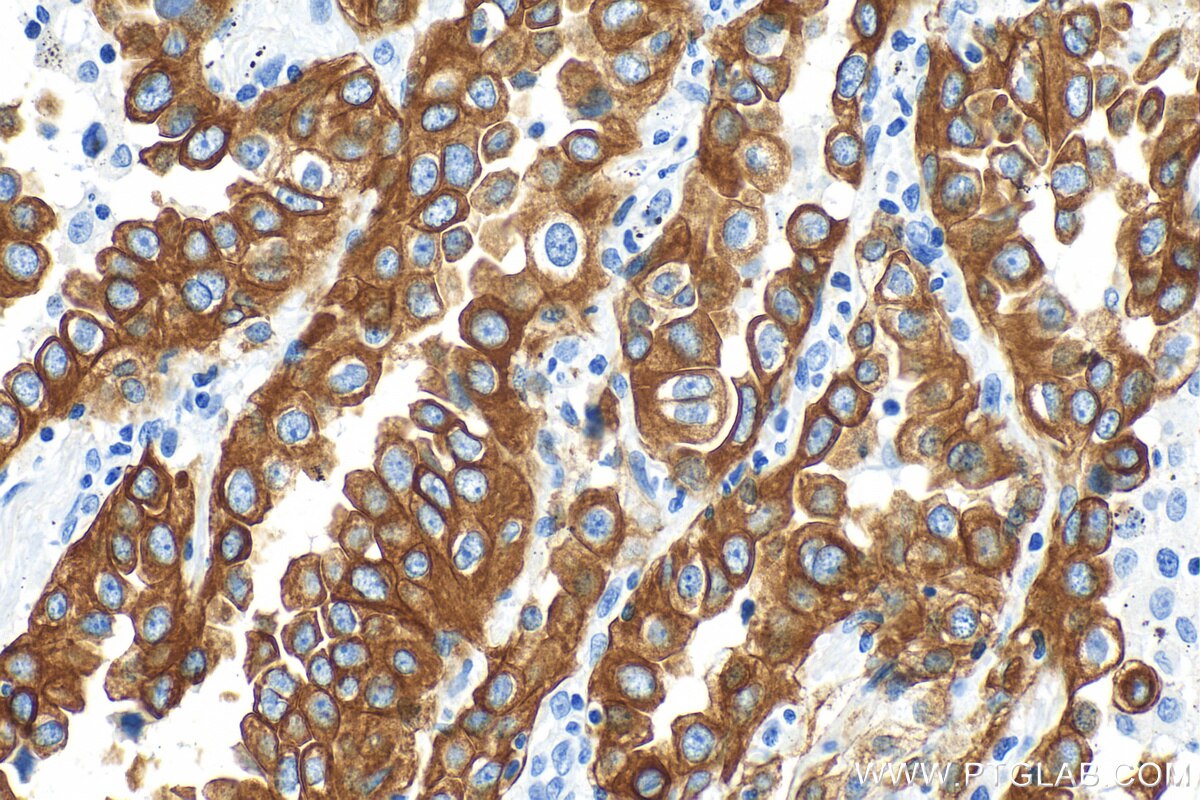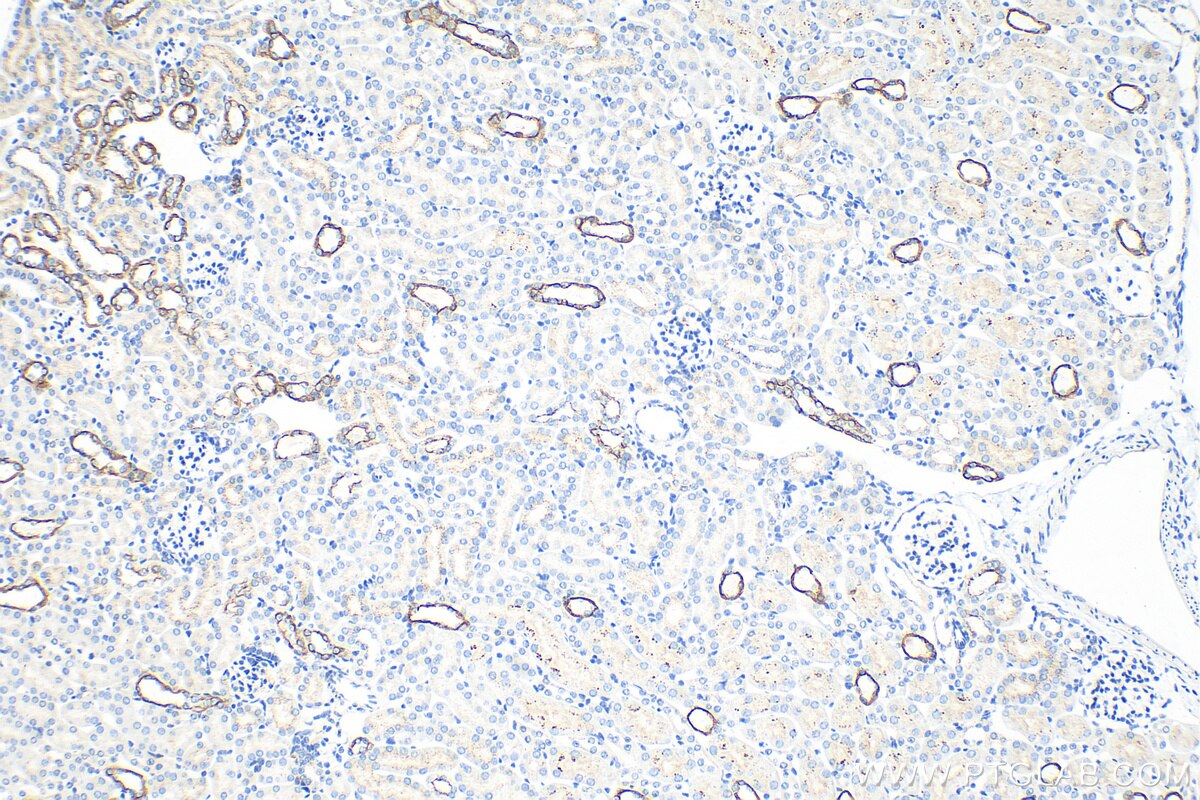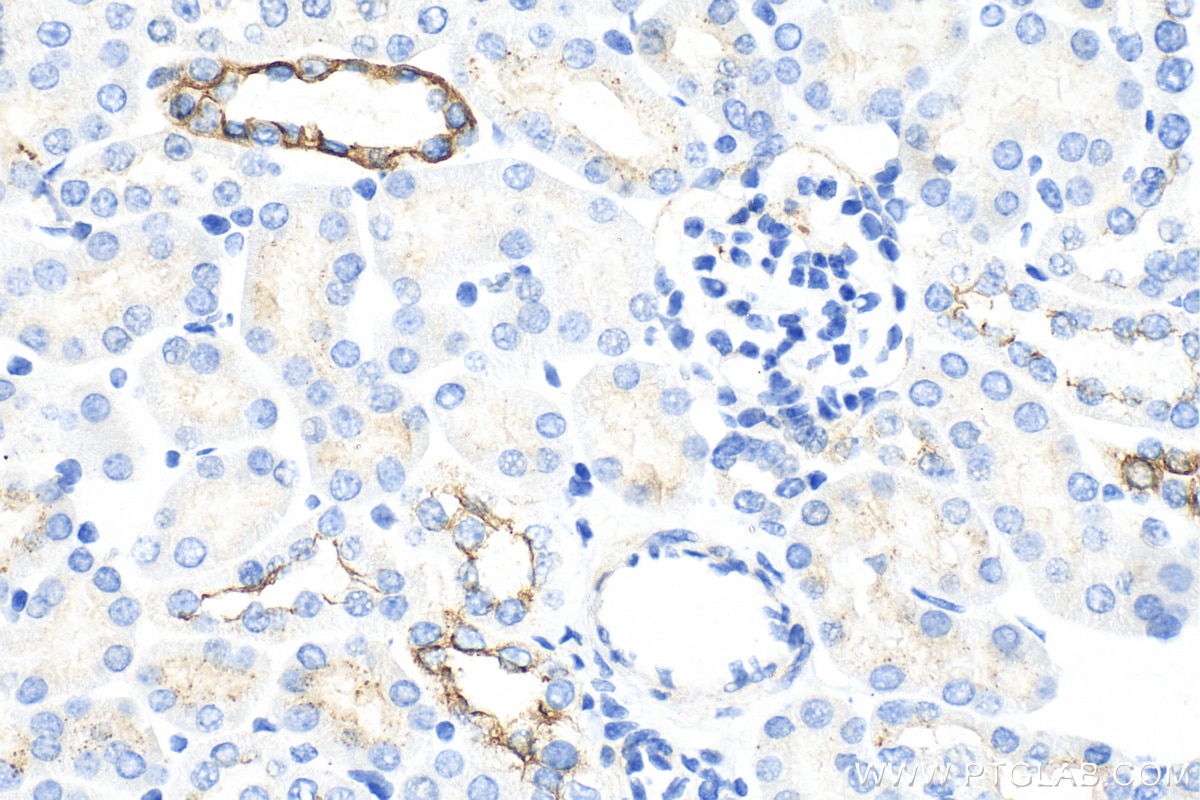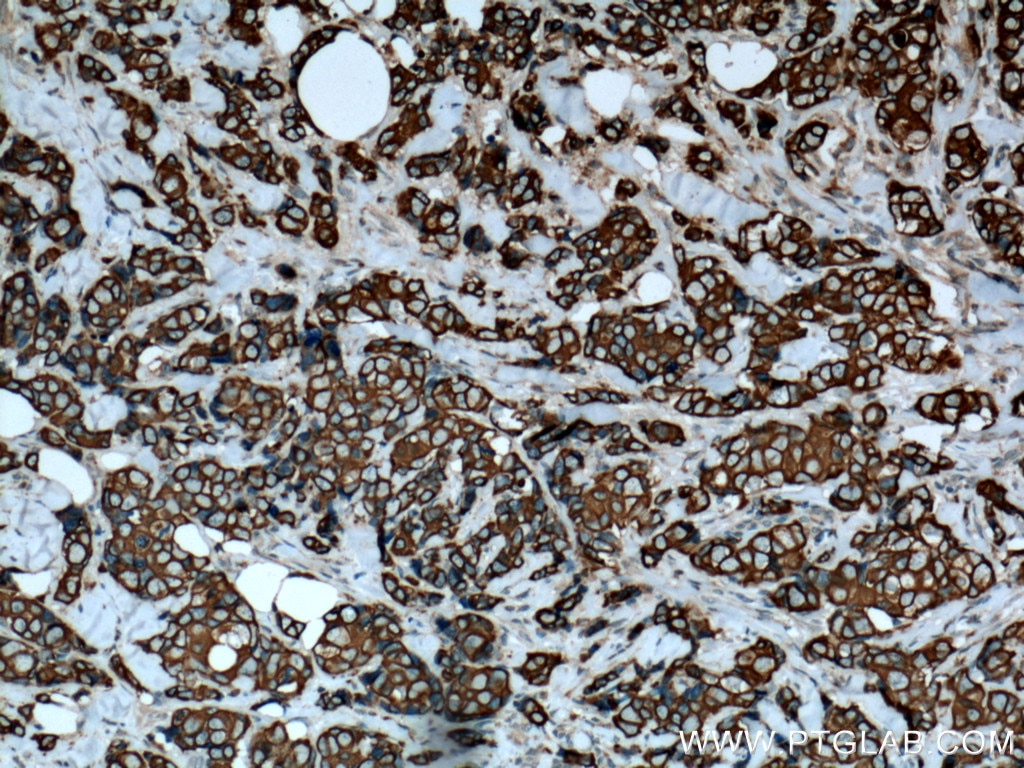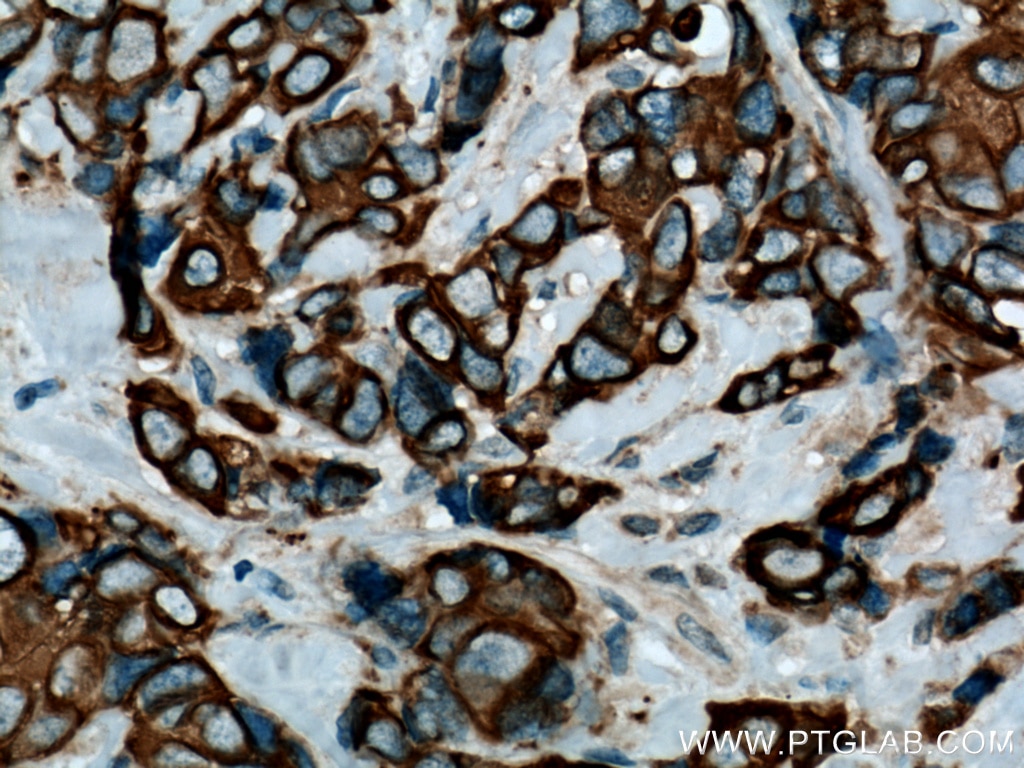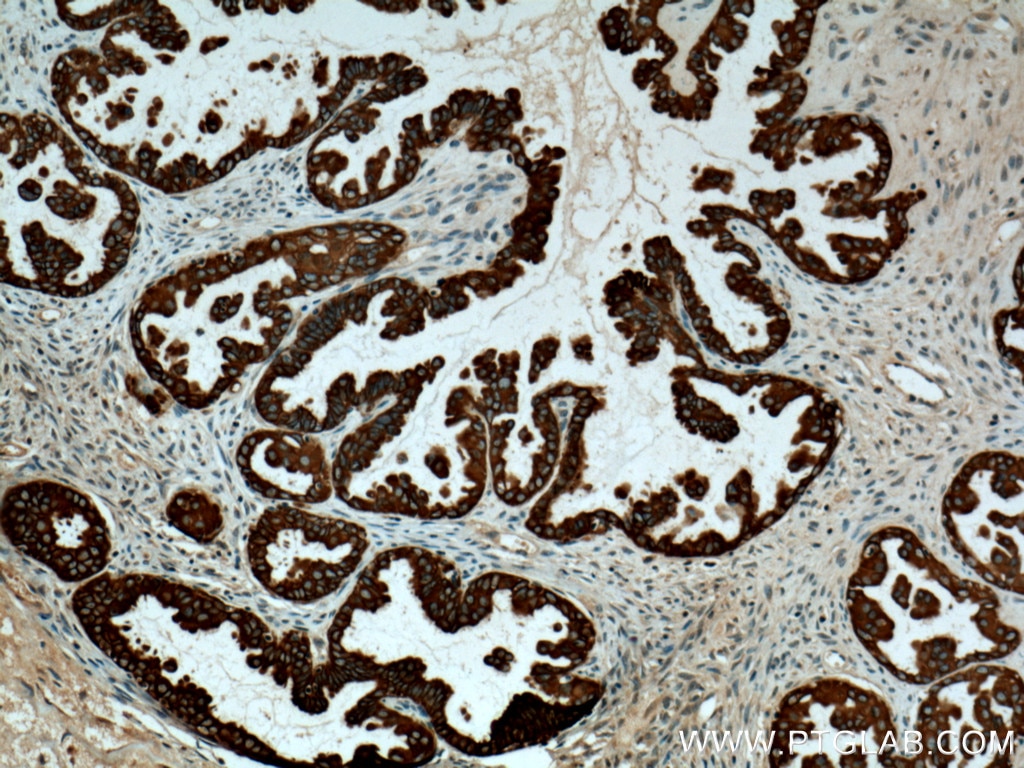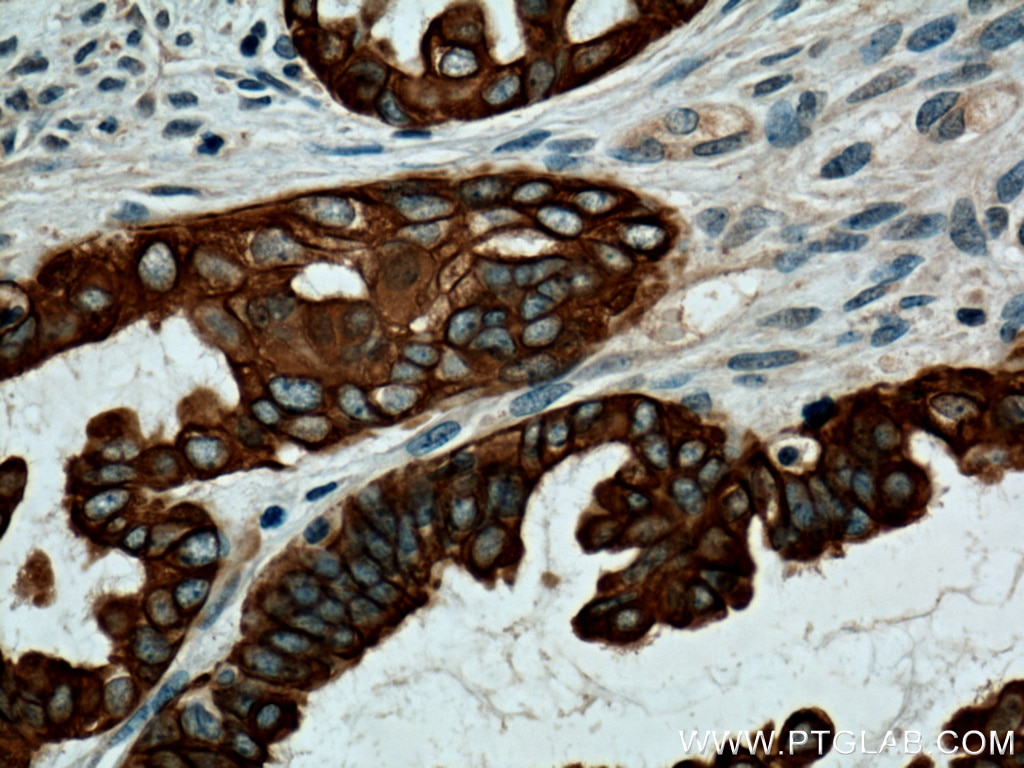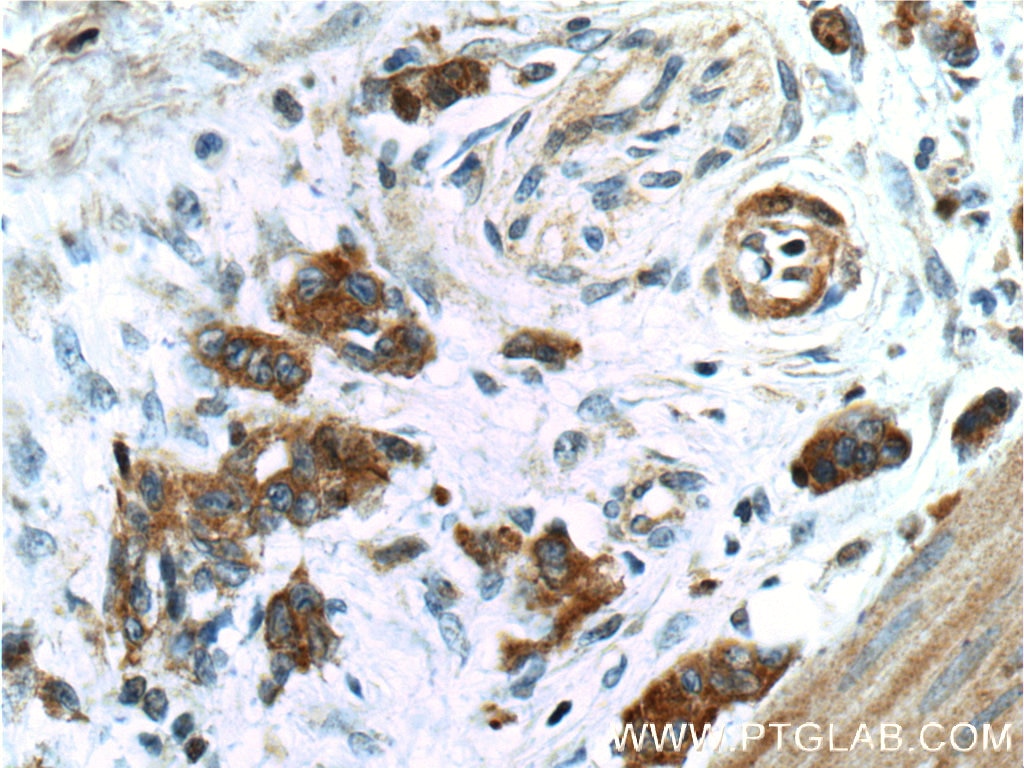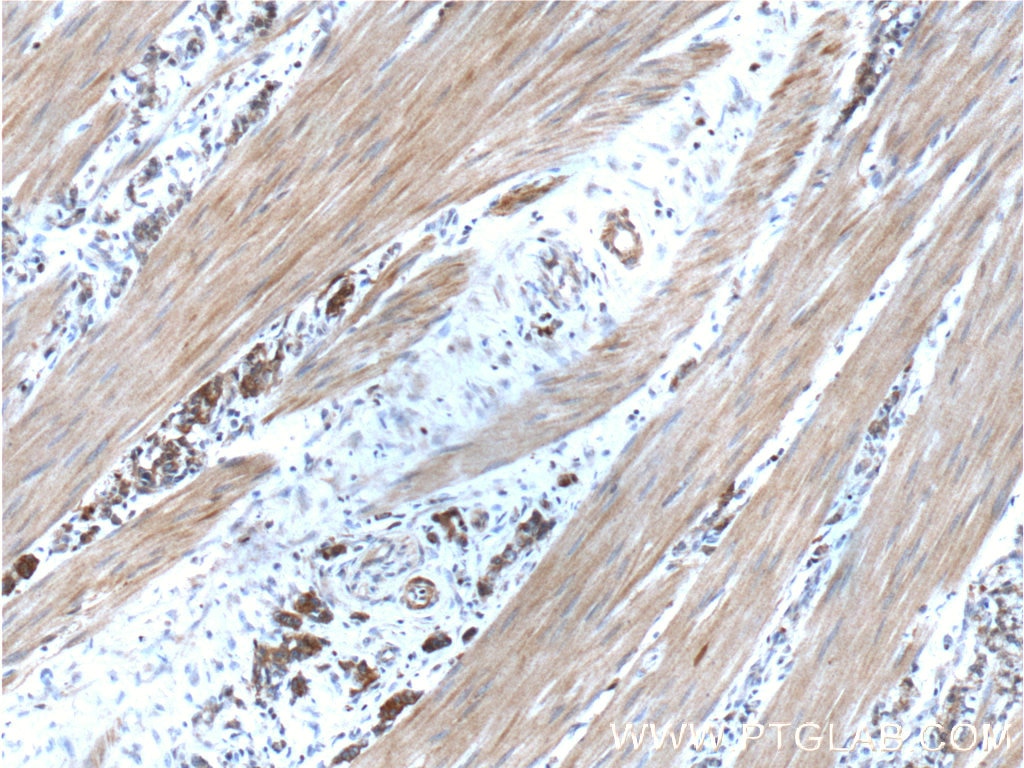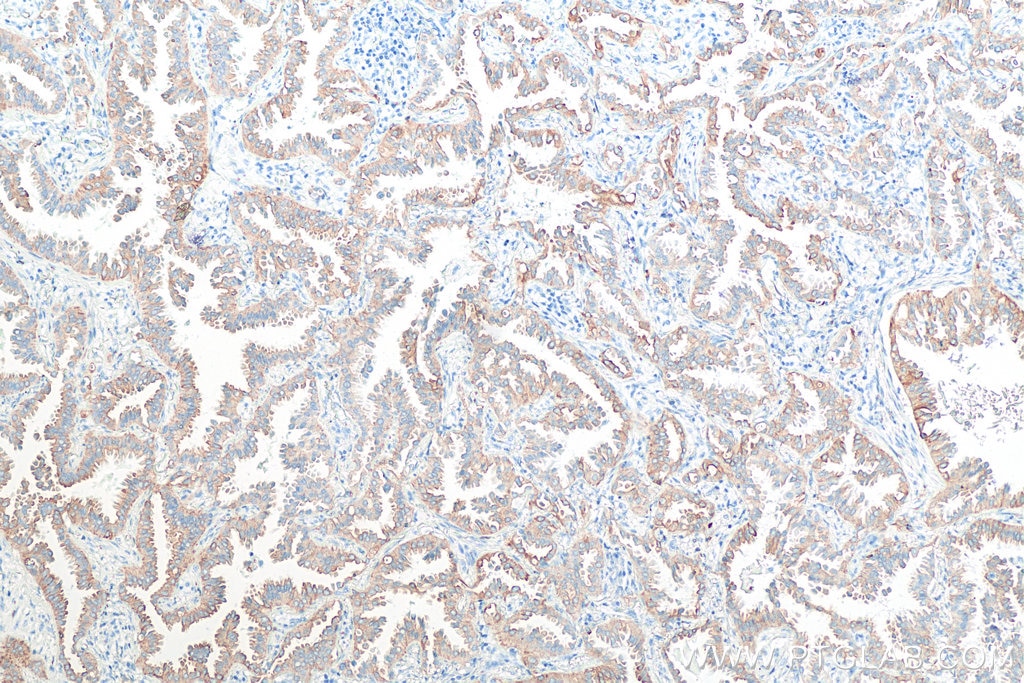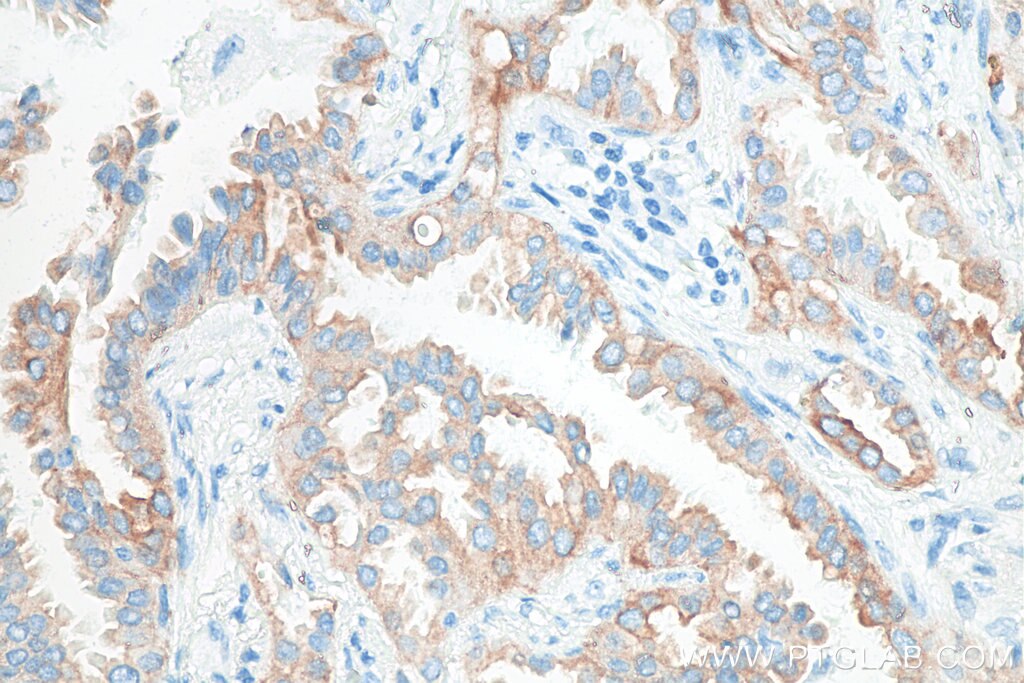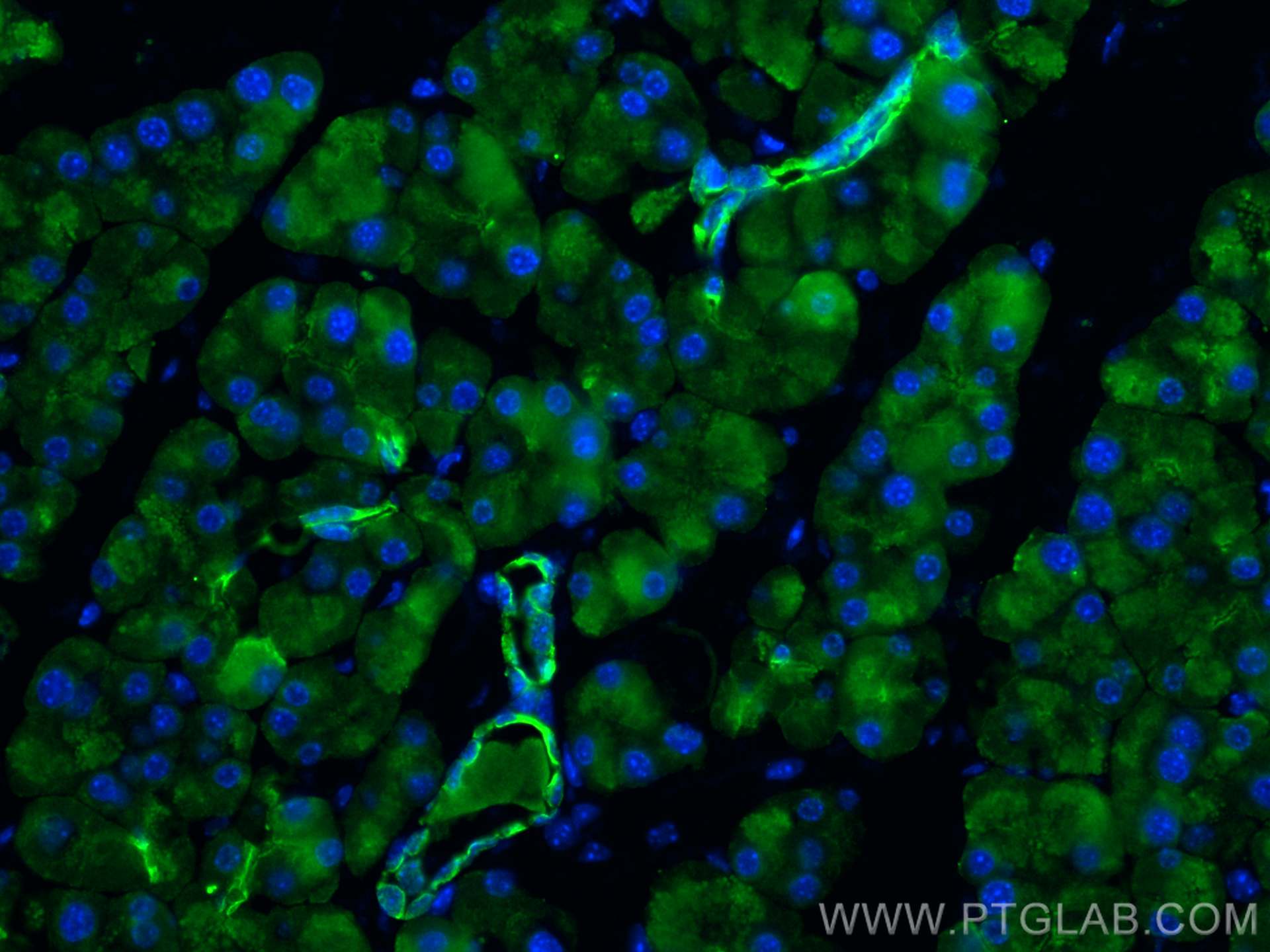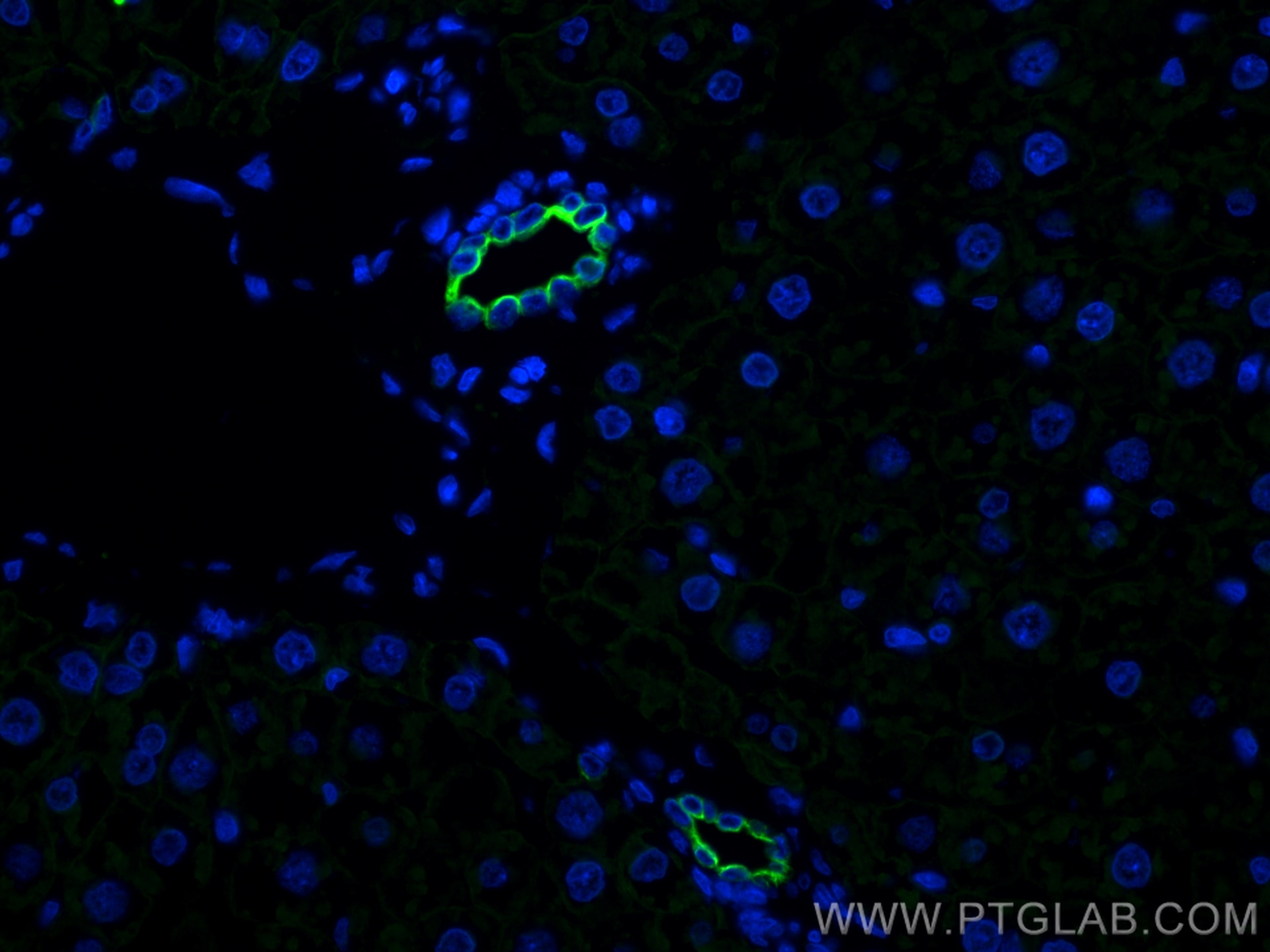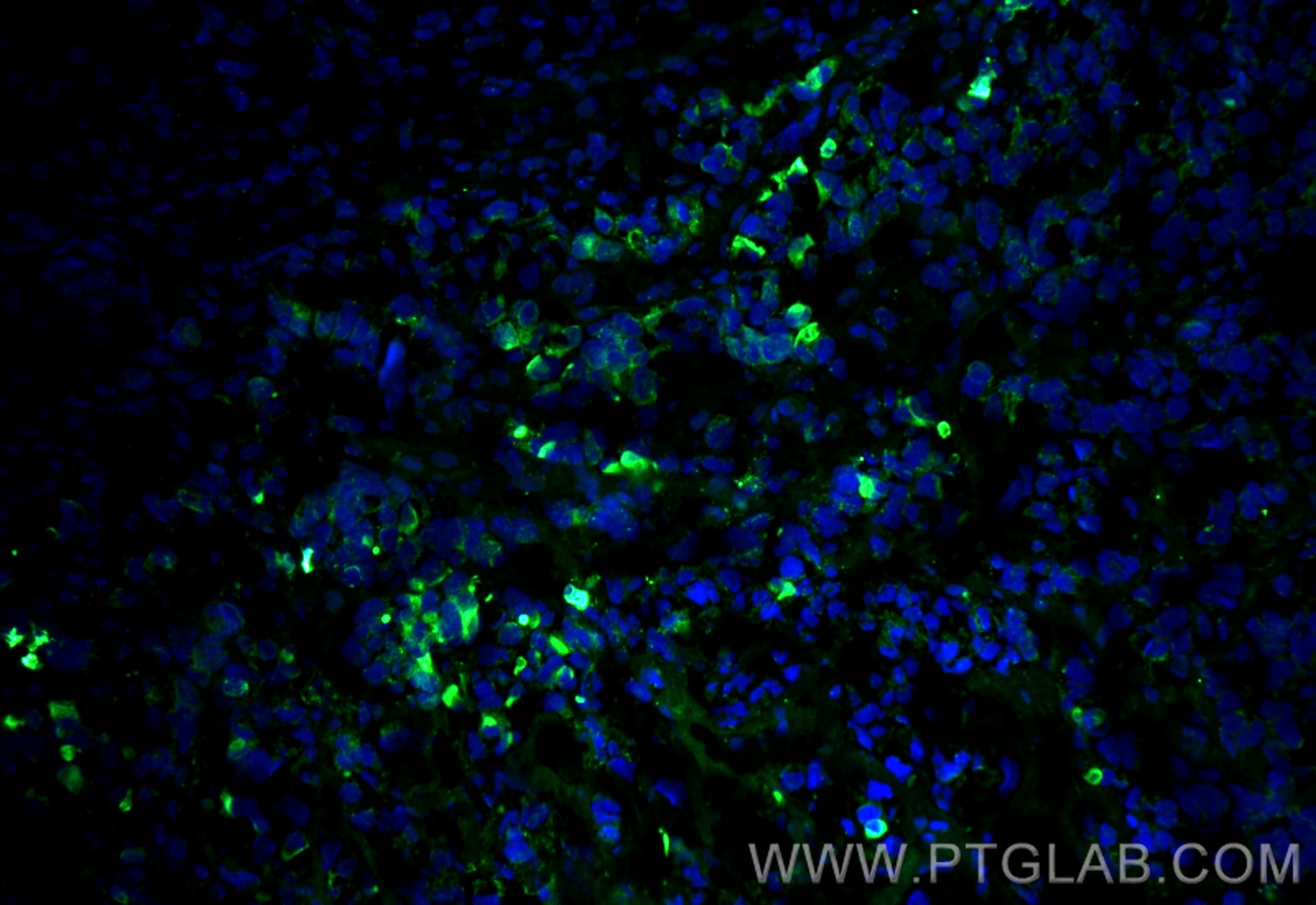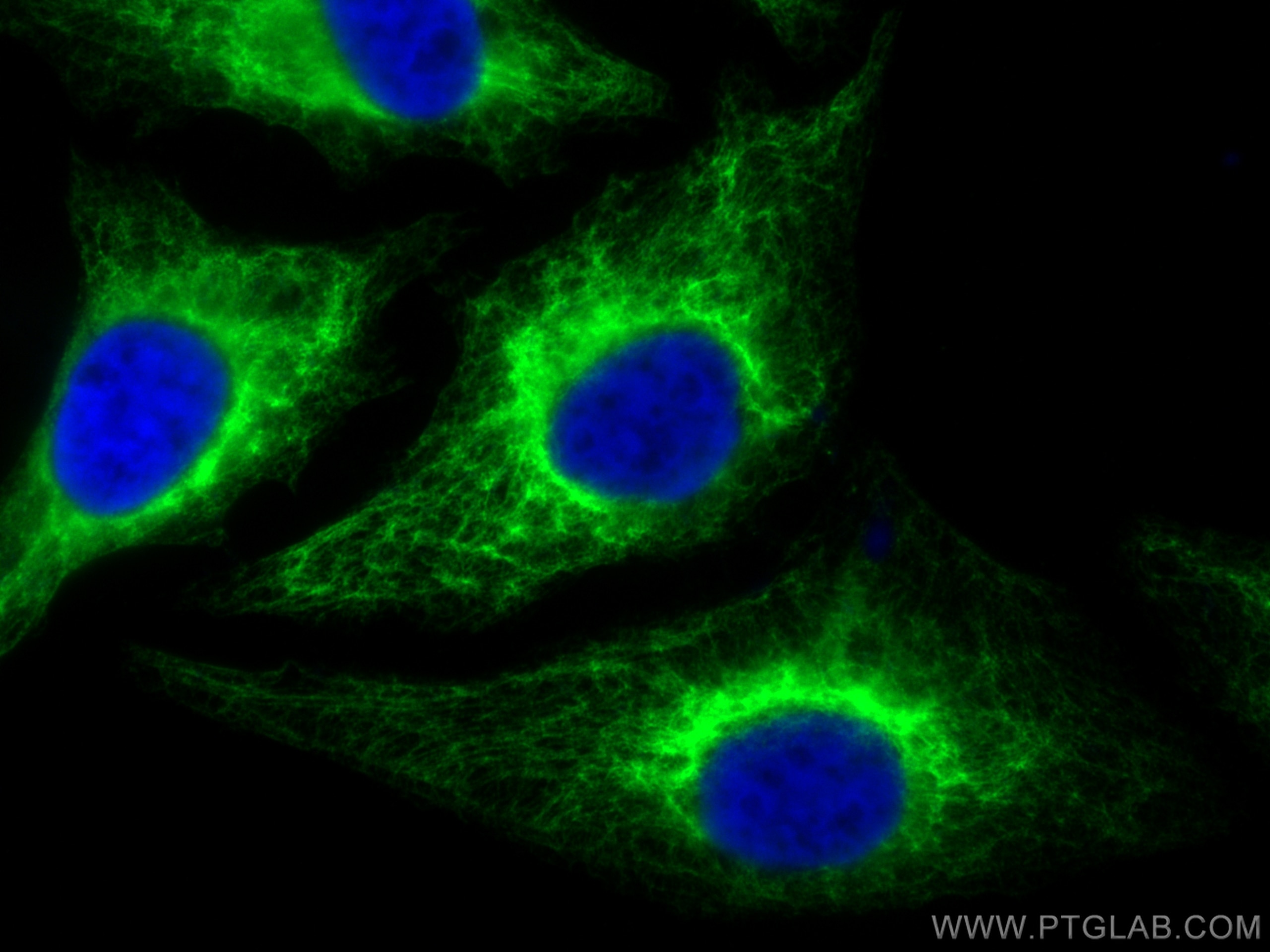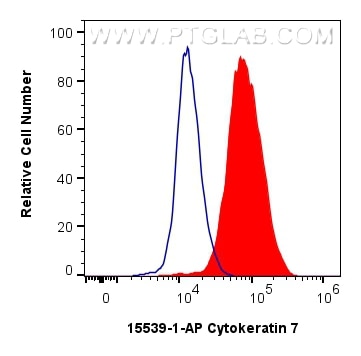Anticorps Polyclonal de lapin anti-Cytokeratin 7
Cytokeratin 7 Polyclonal Antibody for WB, IHC, IF/ICC, IF-P, IF-Fro, FC (Intra), ELISA
Hôte / Isotype
Lapin / IgG
Réactivité testée
Humain, rat, souris
Applications
WB, IHC, IF/ICC, IF-P, IF-Fro, FC (Intra), ELISA
Conjugaison
Non conjugué
N° de cat : 15539-1-AP
Synonymes
Galerie de données de validation
Applications testées
| Résultats positifs en WB | cellules HeLa, cellules A431, cellules HepG2, tissu hépatique de rat, tissu hépatique de souris, tissu pulmonaire de rat, tissu pulmonaire de souris, tissu vésical de rat, tissu vésical de souris |
| Résultats positifs en IHC | tissu pancréatique humain, tissu de cancer de l'estomac humain, tissu de cancer du poumon humain, tissu de cancer du sein humain, tissu de tumeur ovarienne humain, tissu pancréatique de souris, tissu pulmonaire humain, tissu rénal de rat, tissu rénal de souris, tissu rénal humain il est suggéré de démasquer l'antigène avec un tampon de TE buffer pH 9.0; (*) À défaut, 'le démasquage de l'antigène peut être 'effectué avec un tampon citrate pH 6,0. |
| Résultats positifs en IF-P | tissu pancréatique de souris, tissu hépatique de rat |
| Résultats positifs en IF-Fro | mouse breast cancer, |
| Résultats positifs en IF/ICC | cellules HeLa, |
| Résultats positifs en FC (Intra) | cellules HeLa, |
Dilution recommandée
| Application | Dilution |
|---|---|
| Western Blot (WB) | WB : 1:5000-1:50000 |
| Immunohistochimie (IHC) | IHC : 1:1000-1:30000 |
| Immunofluorescence (IF)-P | IF-P : 1:50-1:500 |
| Immunofluorescence (IF)-FRO | IF-FRO : 1:50-1:500 |
| Immunofluorescence (IF)/ICC | IF/ICC : 1:50-1:500 |
| Flow Cytometry (FC) (INTRA) | FC (INTRA) : 0.80 ug per 10^6 cells in a 100 µl suspension |
| It is recommended that this reagent should be titrated in each testing system to obtain optimal results. | |
| Sample-dependent, check data in validation data gallery | |
Applications publiées
| WB | See 4 publications below |
| IHC | See 10 publications below |
| IF | See 16 publications below |
Informations sur le produit
15539-1-AP cible Cytokeratin 7 dans les applications de WB, IHC, IF/ICC, IF-P, IF-Fro, FC (Intra), ELISA et montre une réactivité avec des échantillons Humain, rat, souris
| Réactivité | Humain, rat, souris |
| Réactivité citée | rat, Humain, souris |
| Hôte / Isotype | Lapin / IgG |
| Clonalité | Polyclonal |
| Type | Anticorps |
| Immunogène | Cytokeratin 7 Protéine recombinante Ag7895 |
| Nom complet | keratin 7 |
| Masse moléculaire calculée | 469 aa, 51 kDa |
| Poids moléculaire observé | 51 kDa |
| Numéro d’acquisition GenBank | BC002700 |
| Symbole du gène | Cytokeratin 7 |
| Identification du gène (NCBI) | 3855 |
| Conjugaison | Non conjugué |
| Forme | Liquide |
| Méthode de purification | Purification par affinité contre l'antigène |
| Tampon de stockage | PBS with 0.02% sodium azide and 50% glycerol |
| Conditions de stockage | Stocker à -20°C. Stable pendant un an après l'expédition. L'aliquotage n'est pas nécessaire pour le stockage à -20oC Les 20ul contiennent 0,1% de BSA. |
Informations générales
Cytokeratin 7 (CK7) is a type II keratin protein that is a principal constituent of the intermediate filament cytoskeleton. It is primarily expressed in simple epithelia lining the cavities of internal organs, glandular ducts, and blood vessels. Abnormal expression of CK7 has been linked to various pathological conditions, including cancer. Overexpression of CK7 promotes tumor progression and metastasis in different human cancers, and its suppression leads to rapid tumor regression, highlighting its potential as a therapeutic target CK7 is also involved in inhibiting interferon-dependent interphase, promoting DNA synthesis, initiating translation possibly through interaction with p150 (the largest subunit of eukaryotic translation initiation factor 3), and interacting with G protein-coupled estrogen receptor 1 (GPER1), which activates several signaling pathways. In the context of cancer diagnosis, CK7 is used as a marker to distinguish between different types of carcinomas. It is expressed in most adenocarcinomas, particularly those of the lung and colorectal origin, and is useful in differentiating primary ovarian carcinoma from metastatic colorectal carcinoma. CK7 expression has also been studied as a predictor of an unfavorable prognosis in colorectal carcinoma.
Protocole
| Product Specific Protocols | |
|---|---|
| WB protocol for Cytokeratin 7 antibody 15539-1-AP | Download protocol |
| IHC protocol for Cytokeratin 7 antibody 15539-1-AP | Download protocol |
| IF protocol for Cytokeratin 7 antibody 15539-1-AP | Download protocol |
| FC protocol for Cytokeratin 7 antibody 15539-1-AP | Download protocol |
| Standard Protocols | |
|---|---|
| Click here to view our Standard Protocols |
Publications
| Species | Application | Title |
|---|---|---|
Cancer Cell Promotion of cholangiocarcinoma growth by diverse cancer-associated fibroblast subpopulations. | ||
J Nanobiotechnology GelMA loaded with exosomes from human minor salivary gland organoids enhances wound healing by inducing macrophage polarization | ||
Cell Death Dis α1,3-fucosylation of MEST promotes invasion potential of cytotrophoblast cells by activating translation initiation | ||
Cell Death Dis LIF upregulates poFUT1 expression and promotes trophoblast cell migration and invasion at the fetal-maternal interface. |
